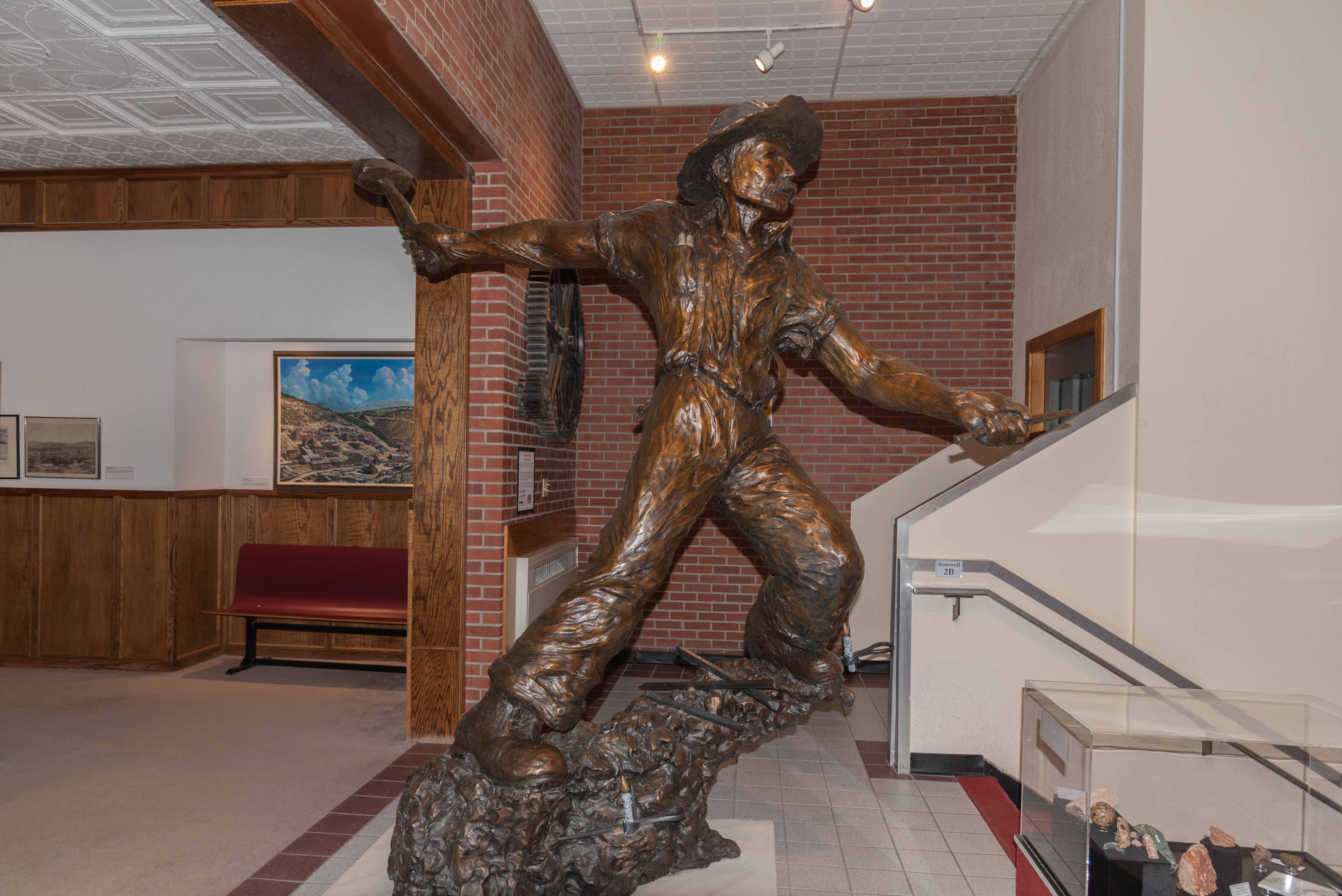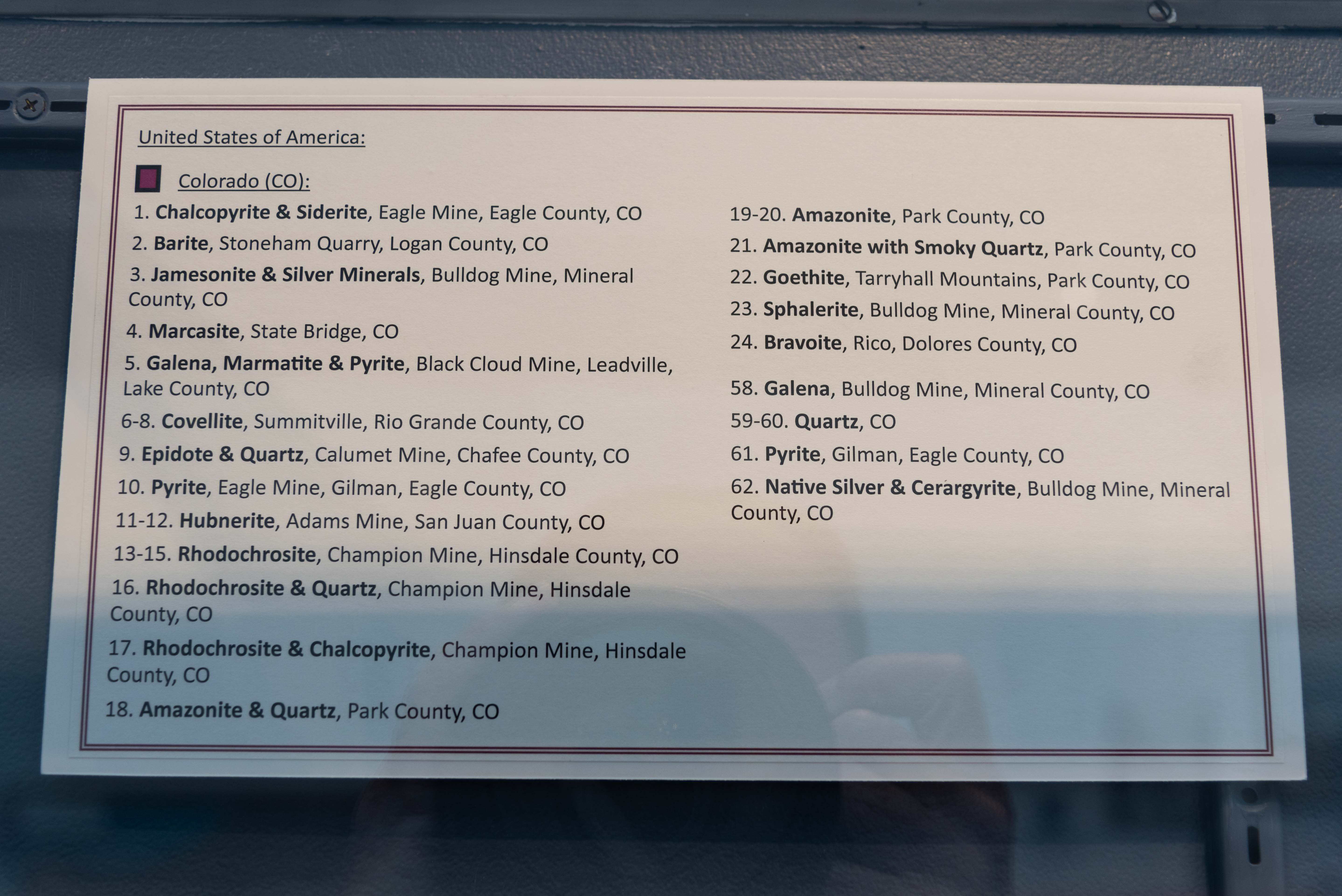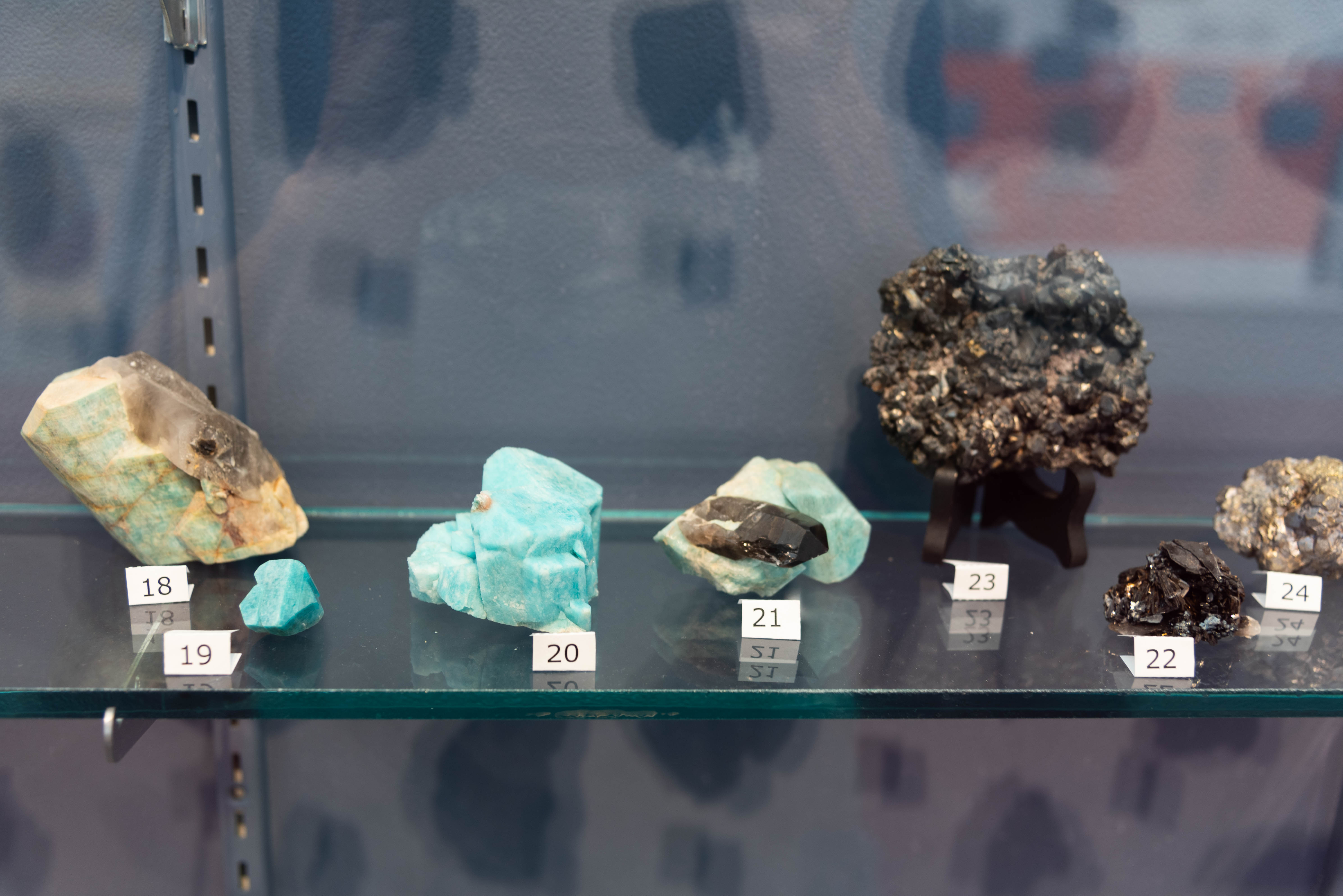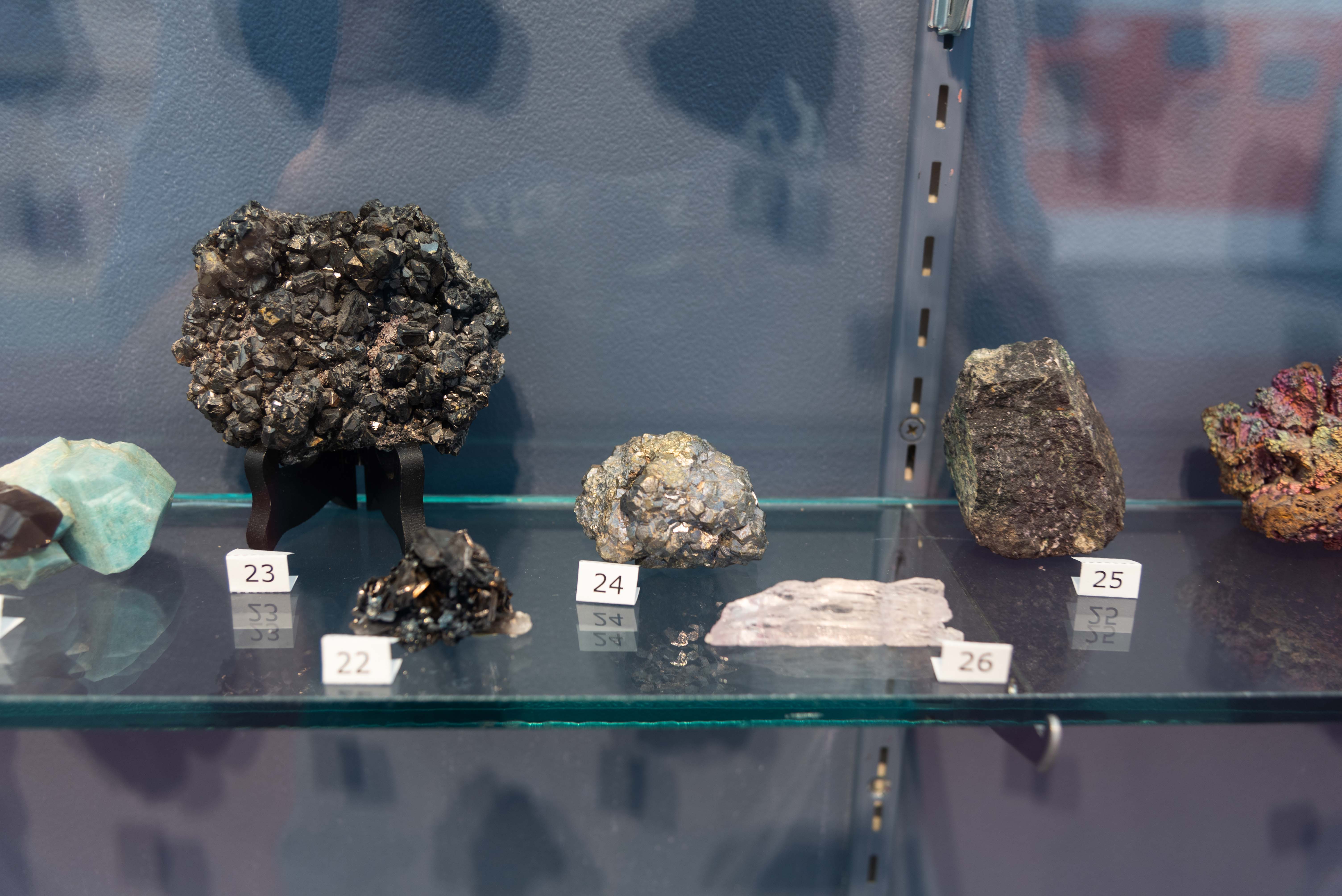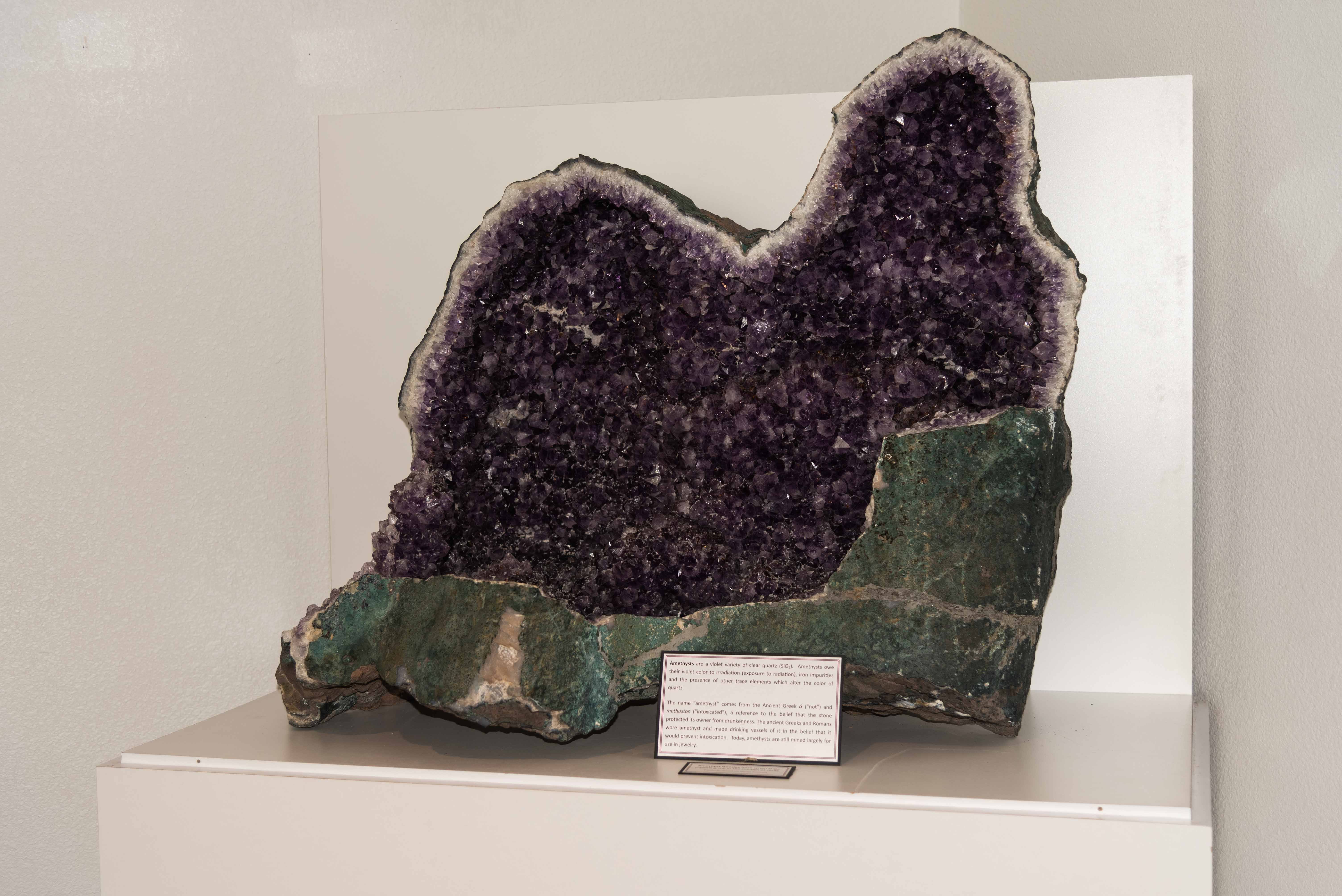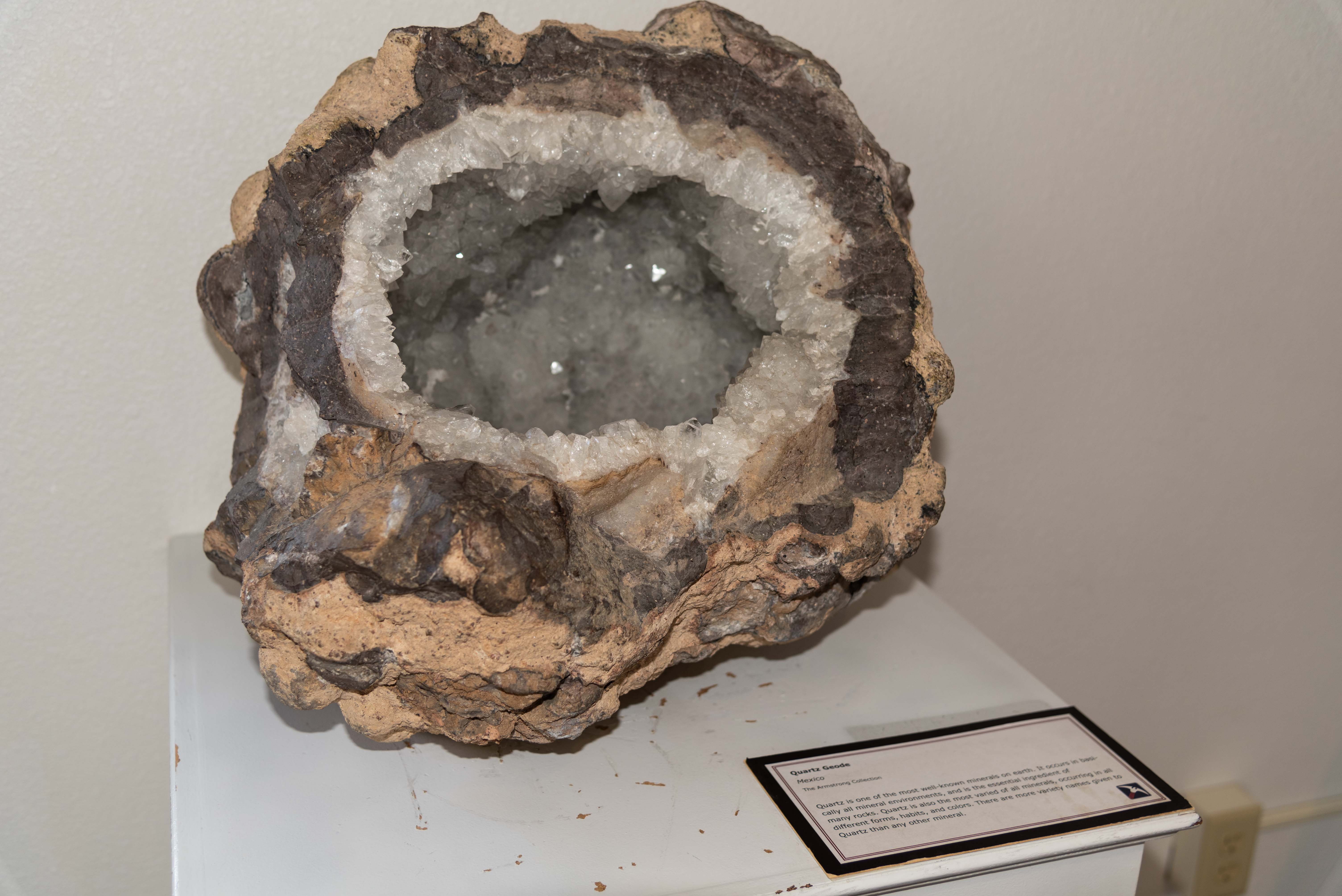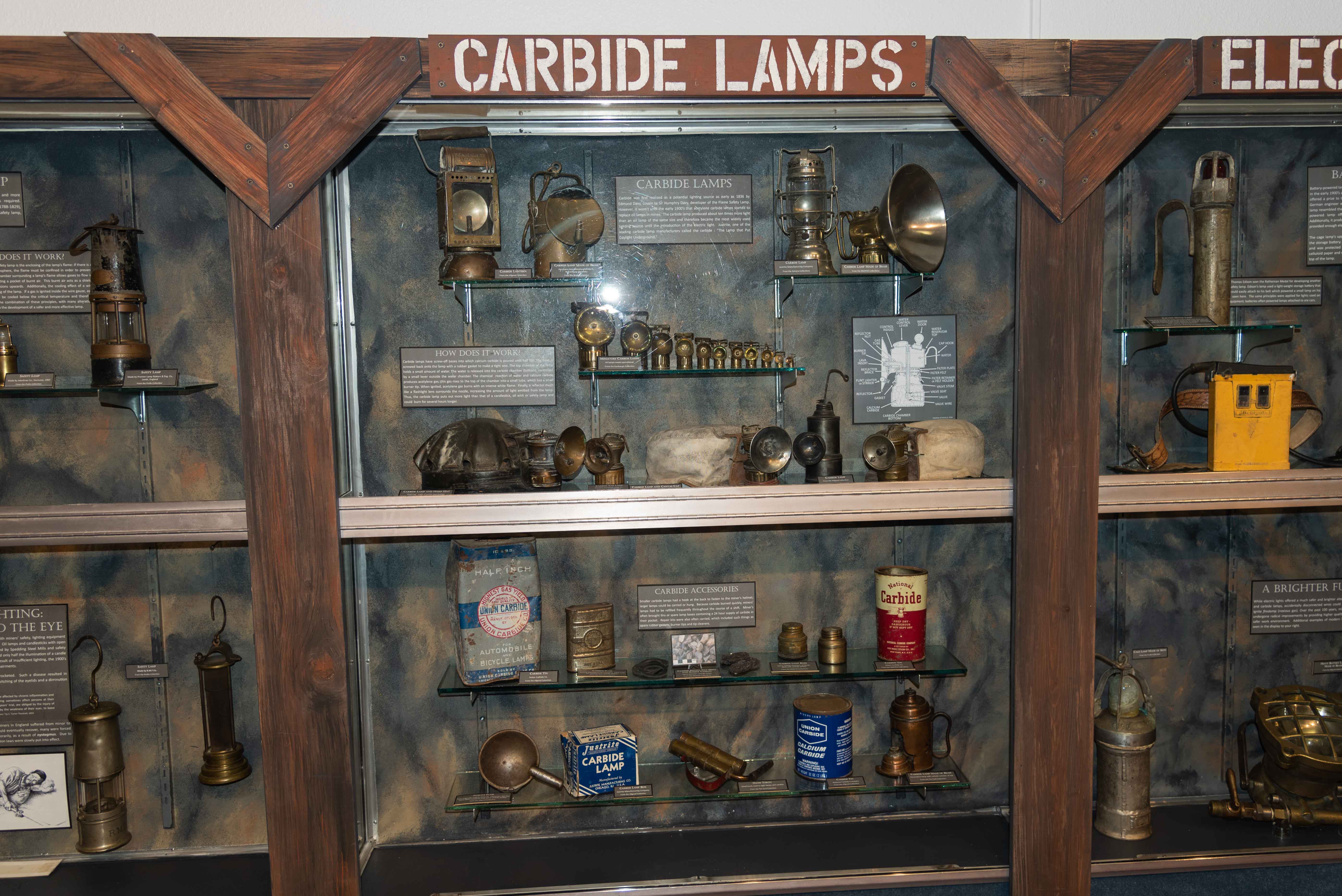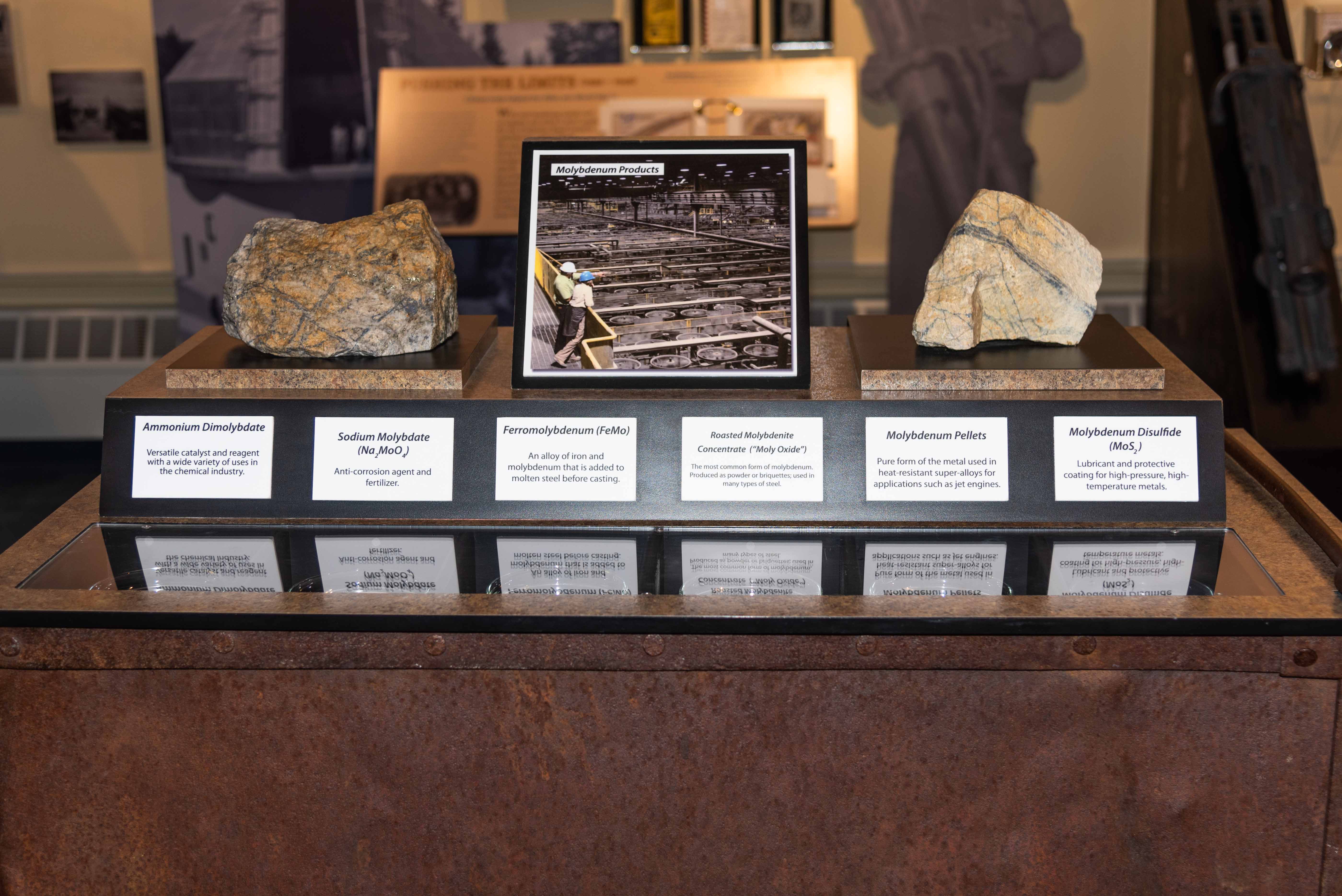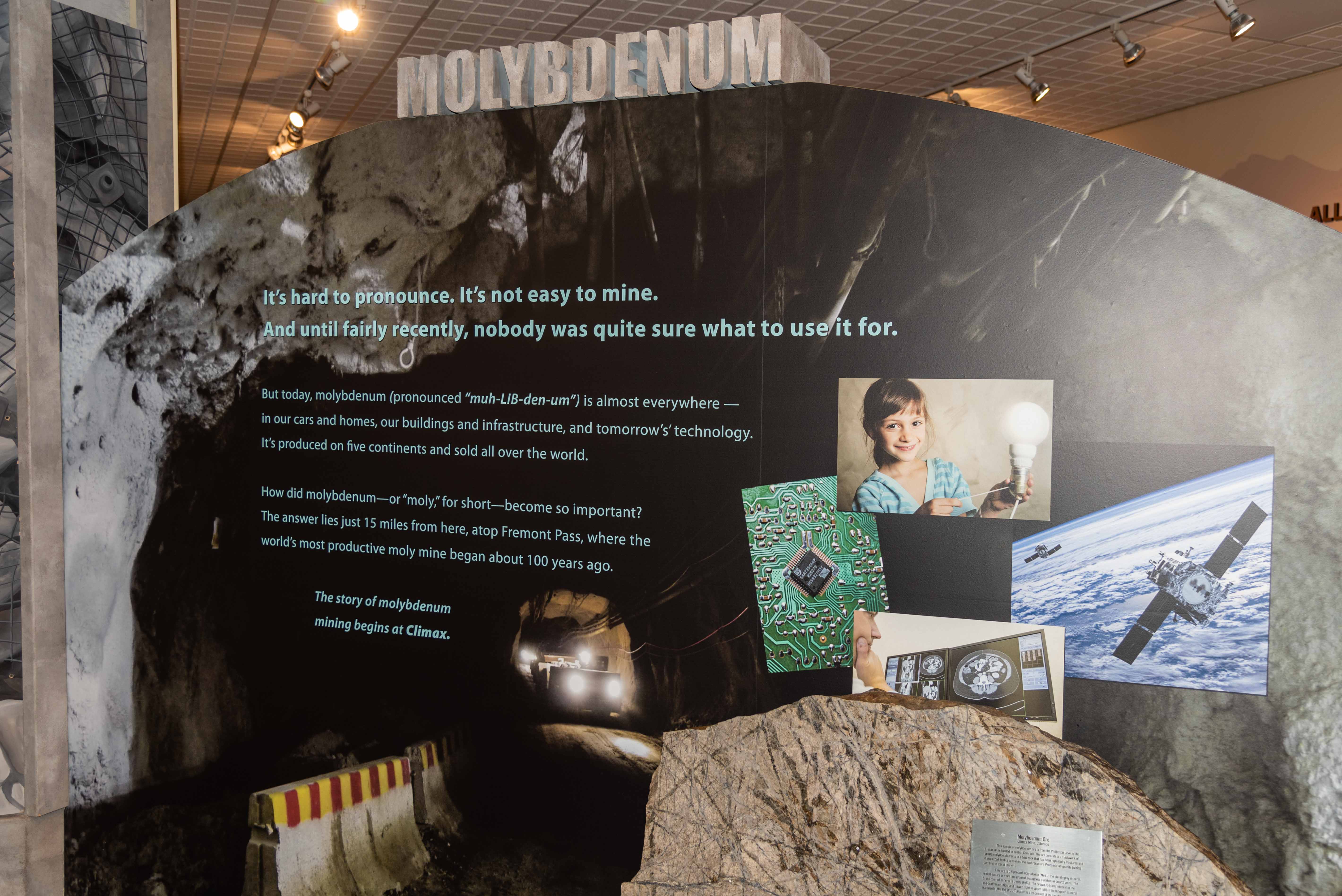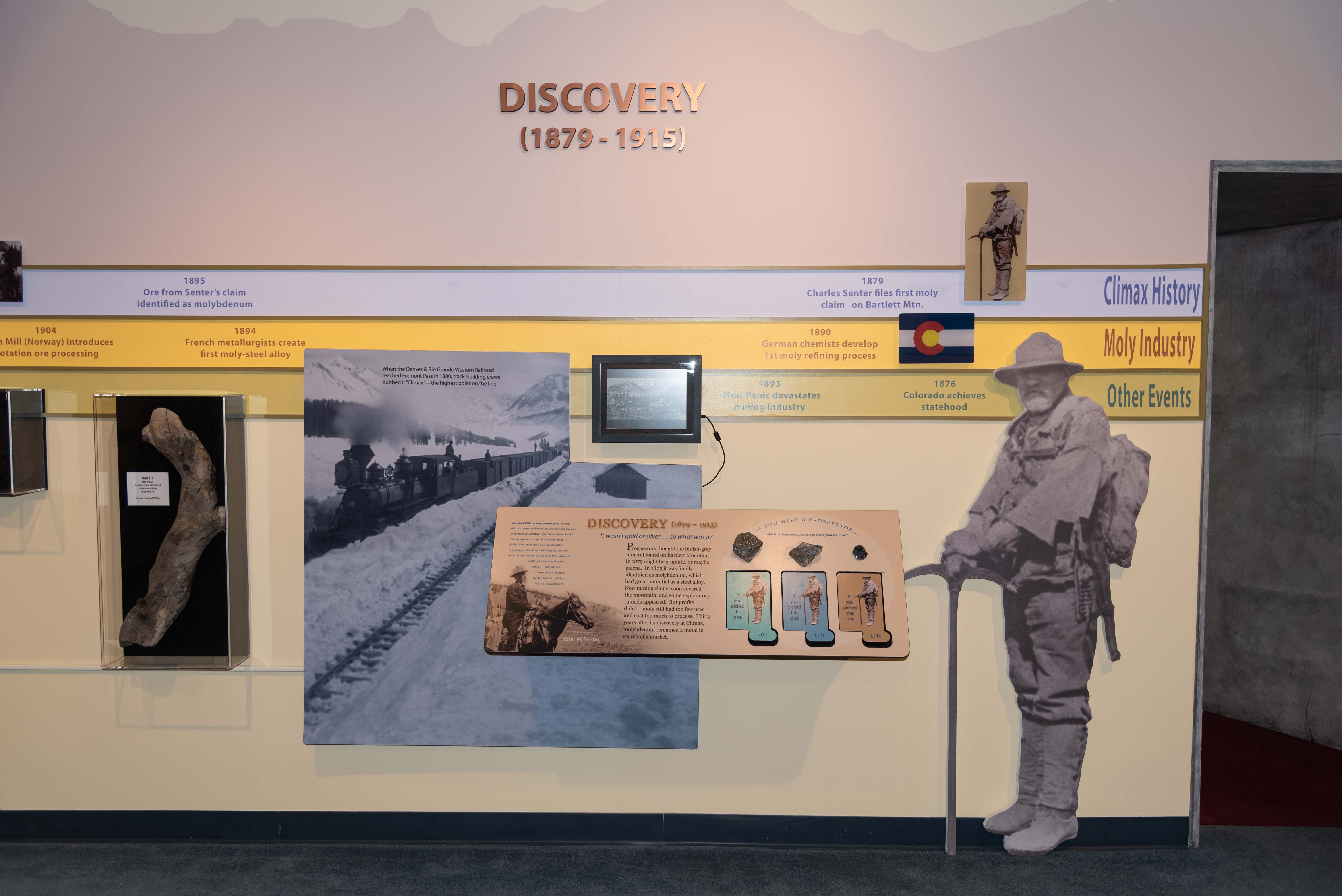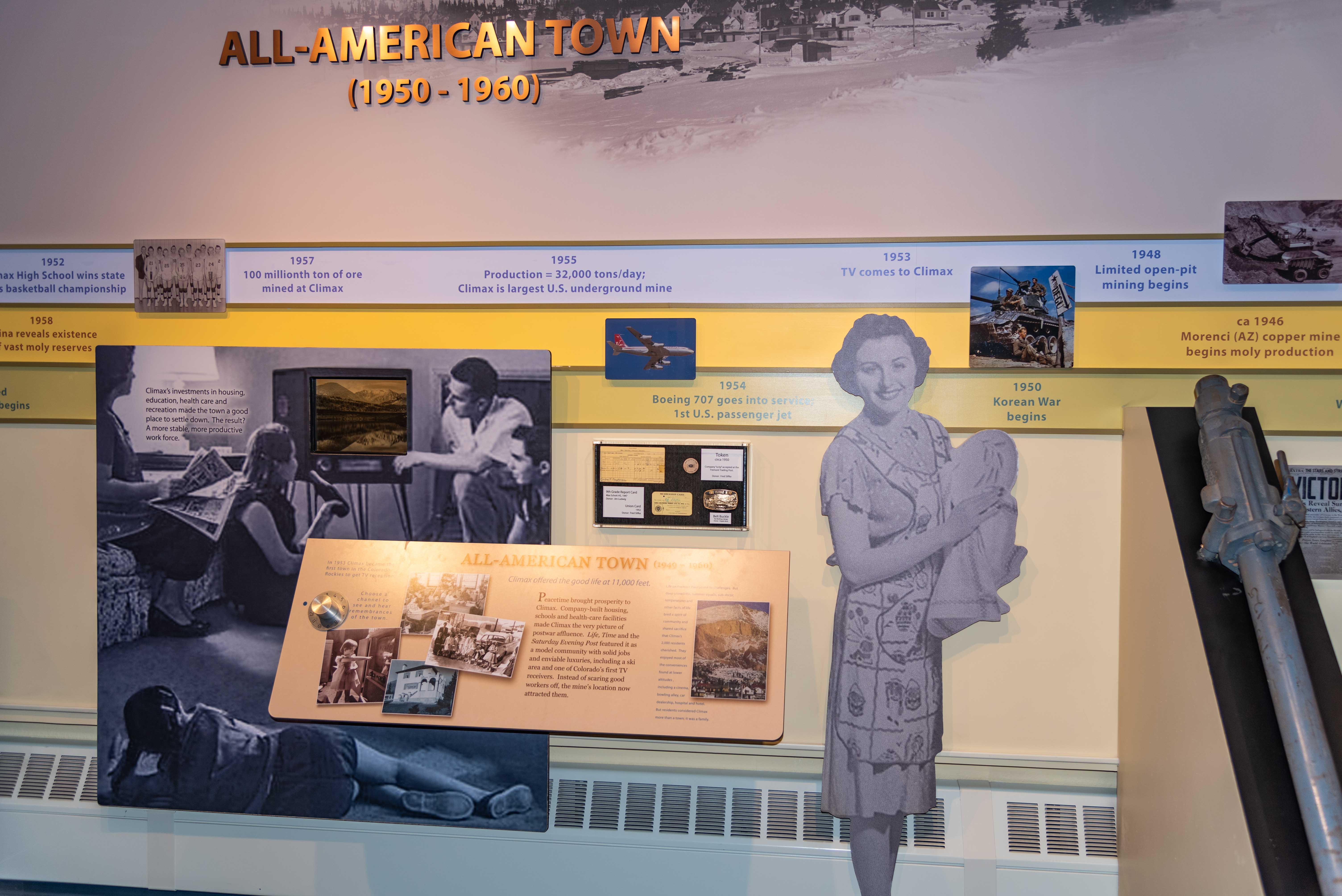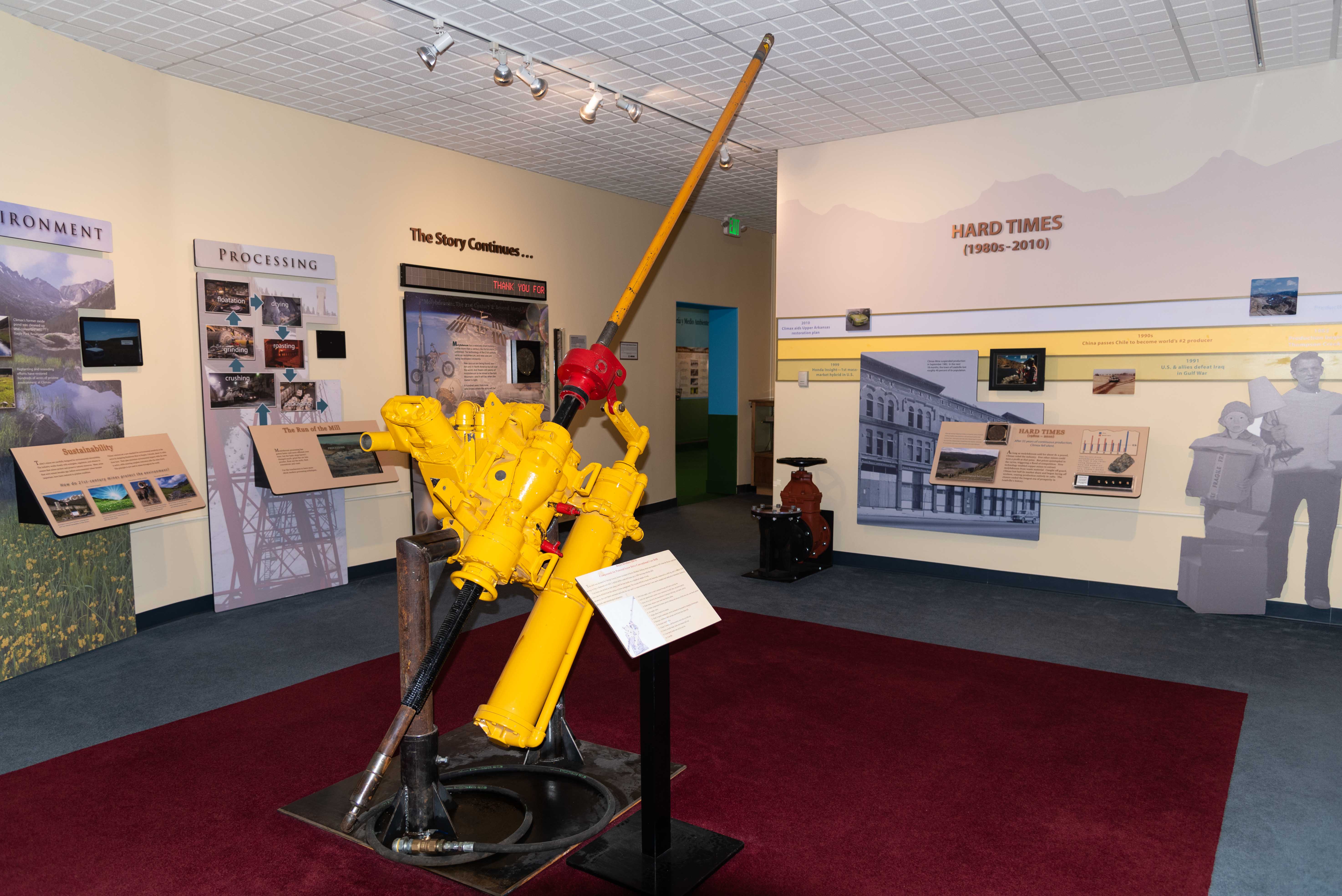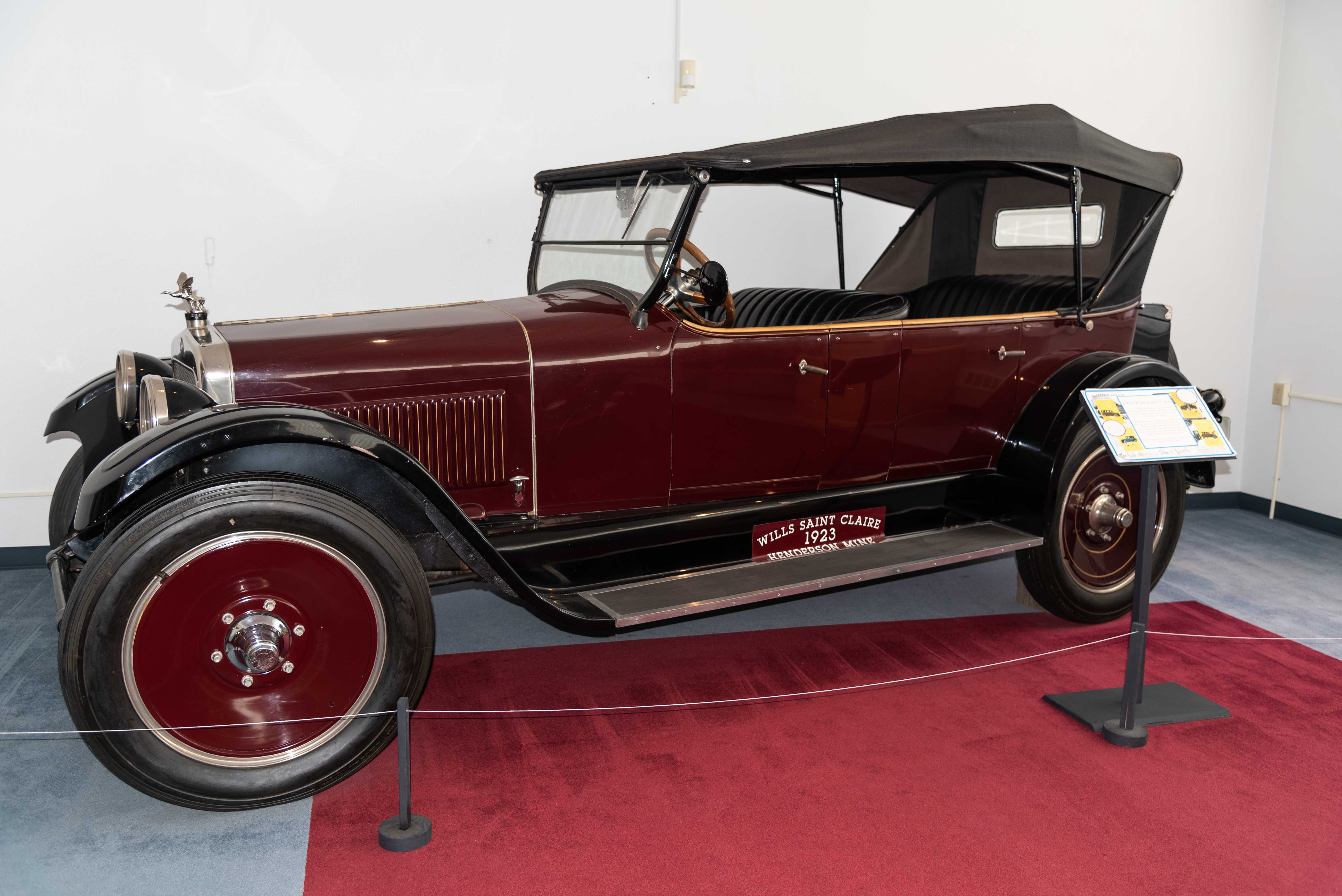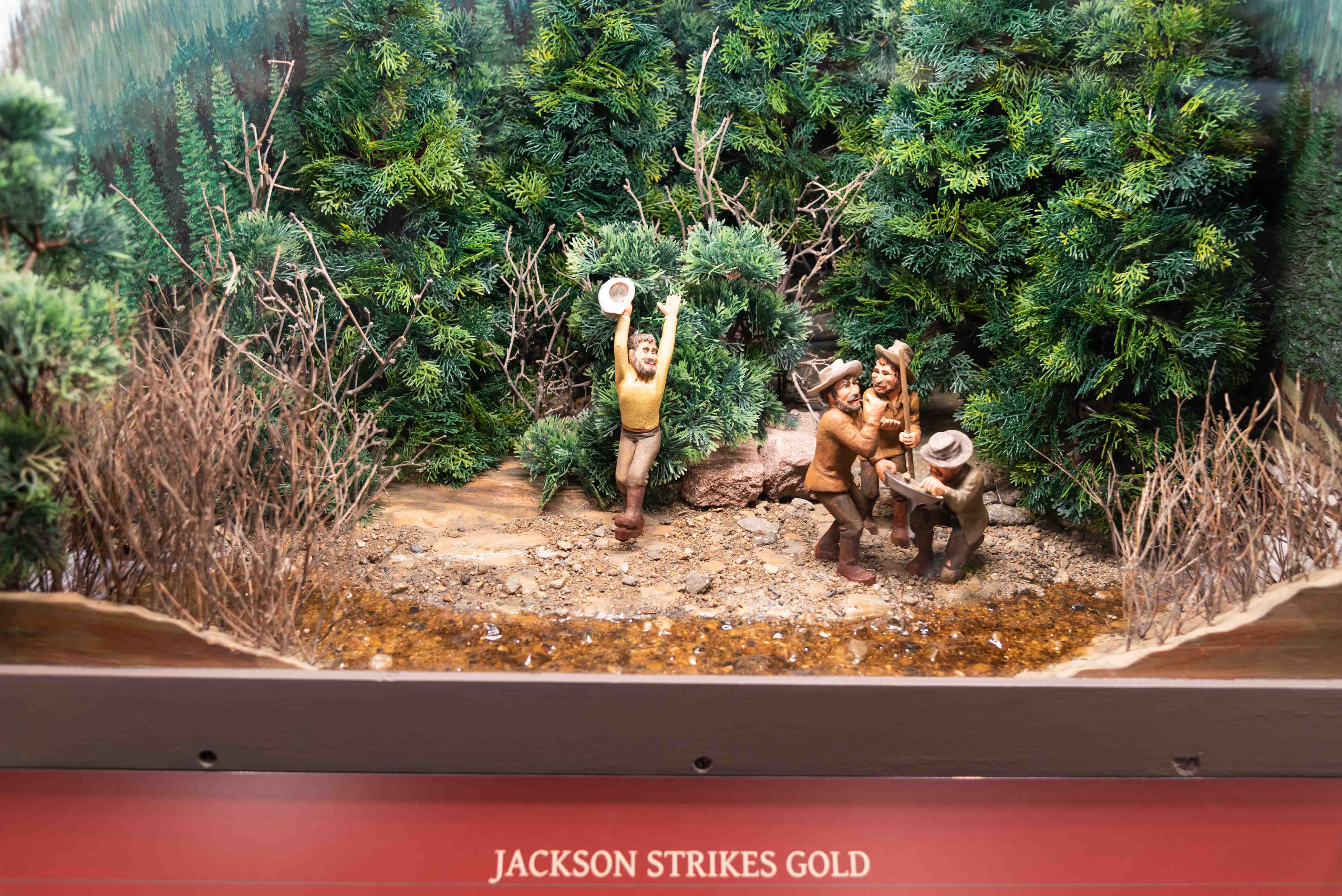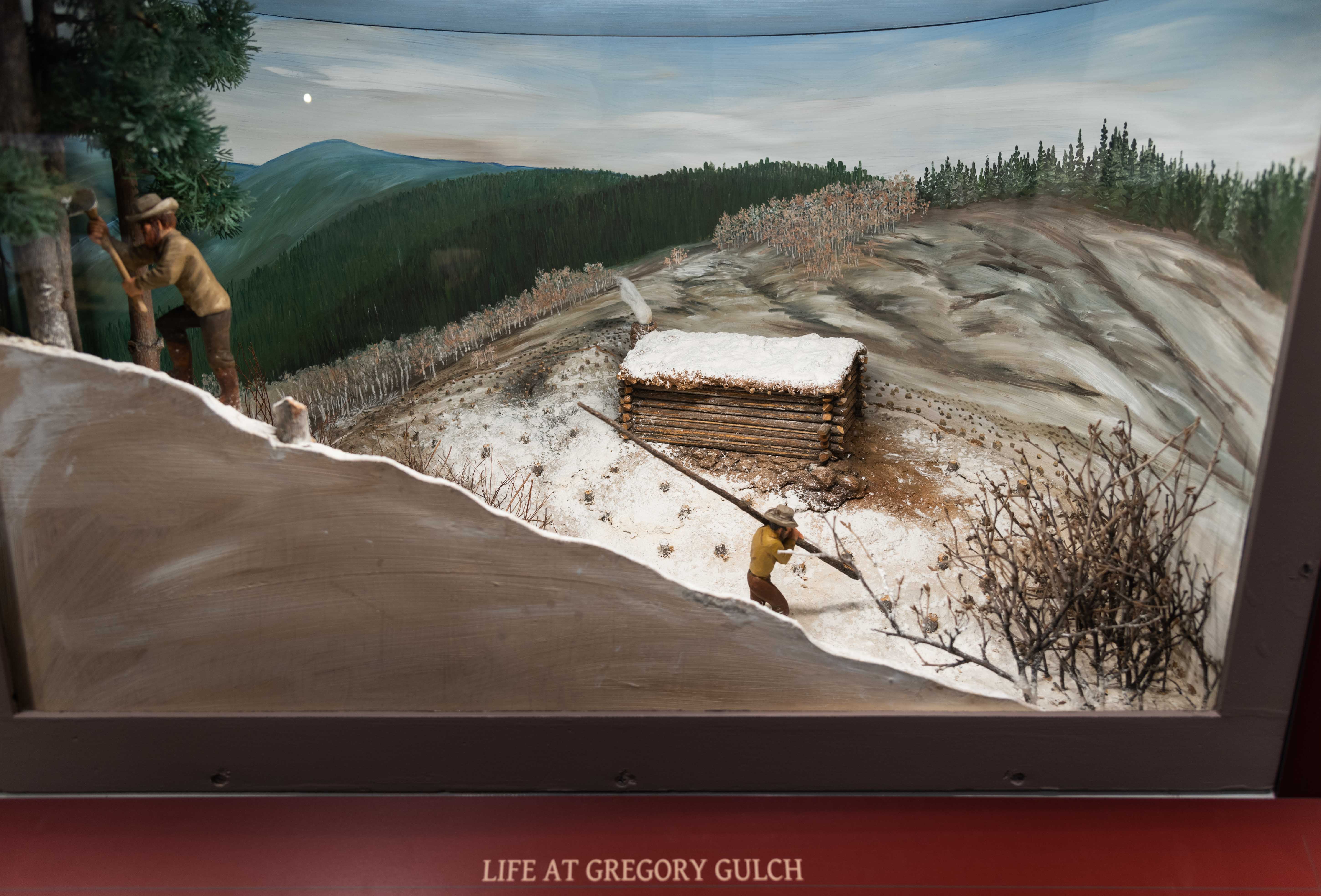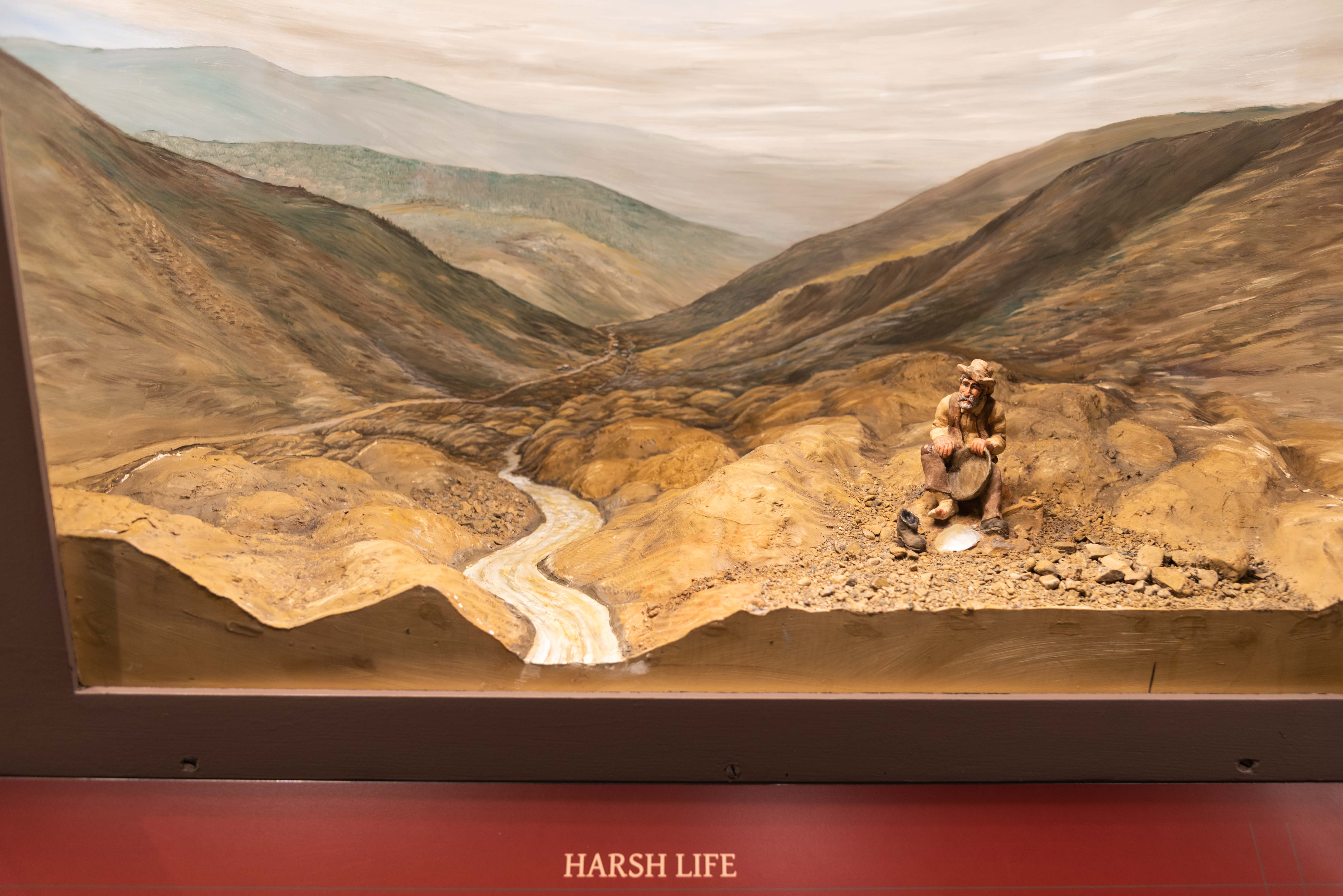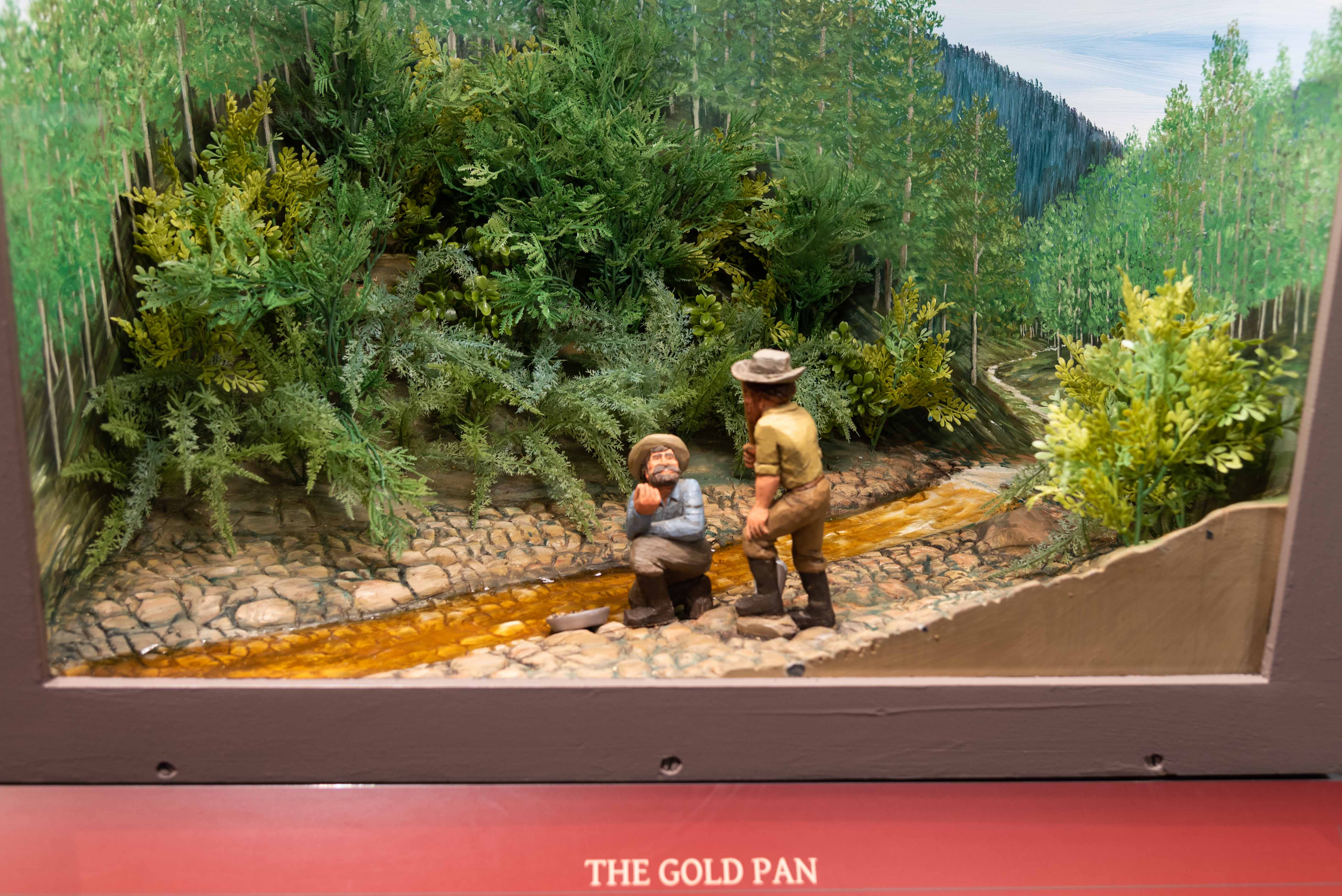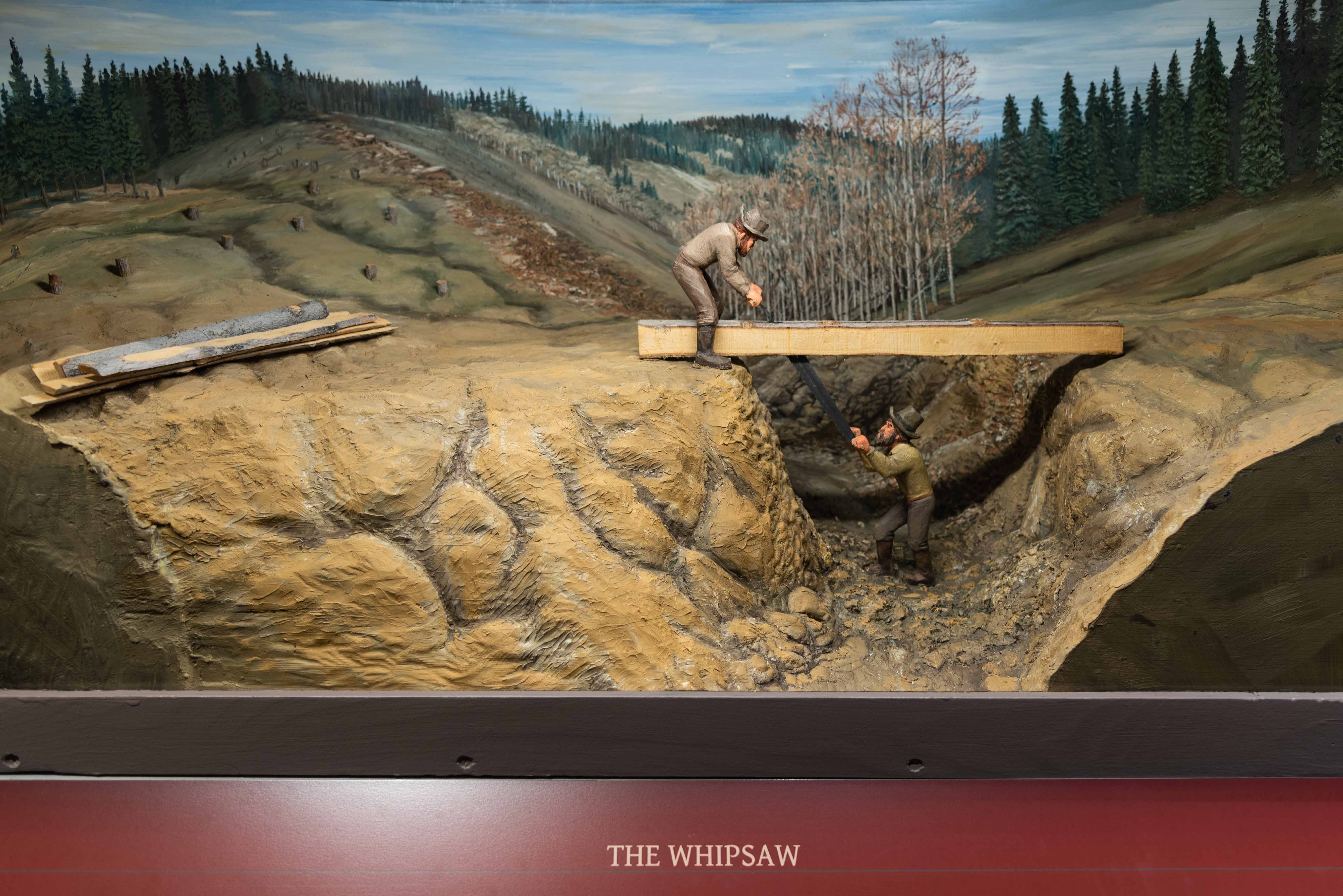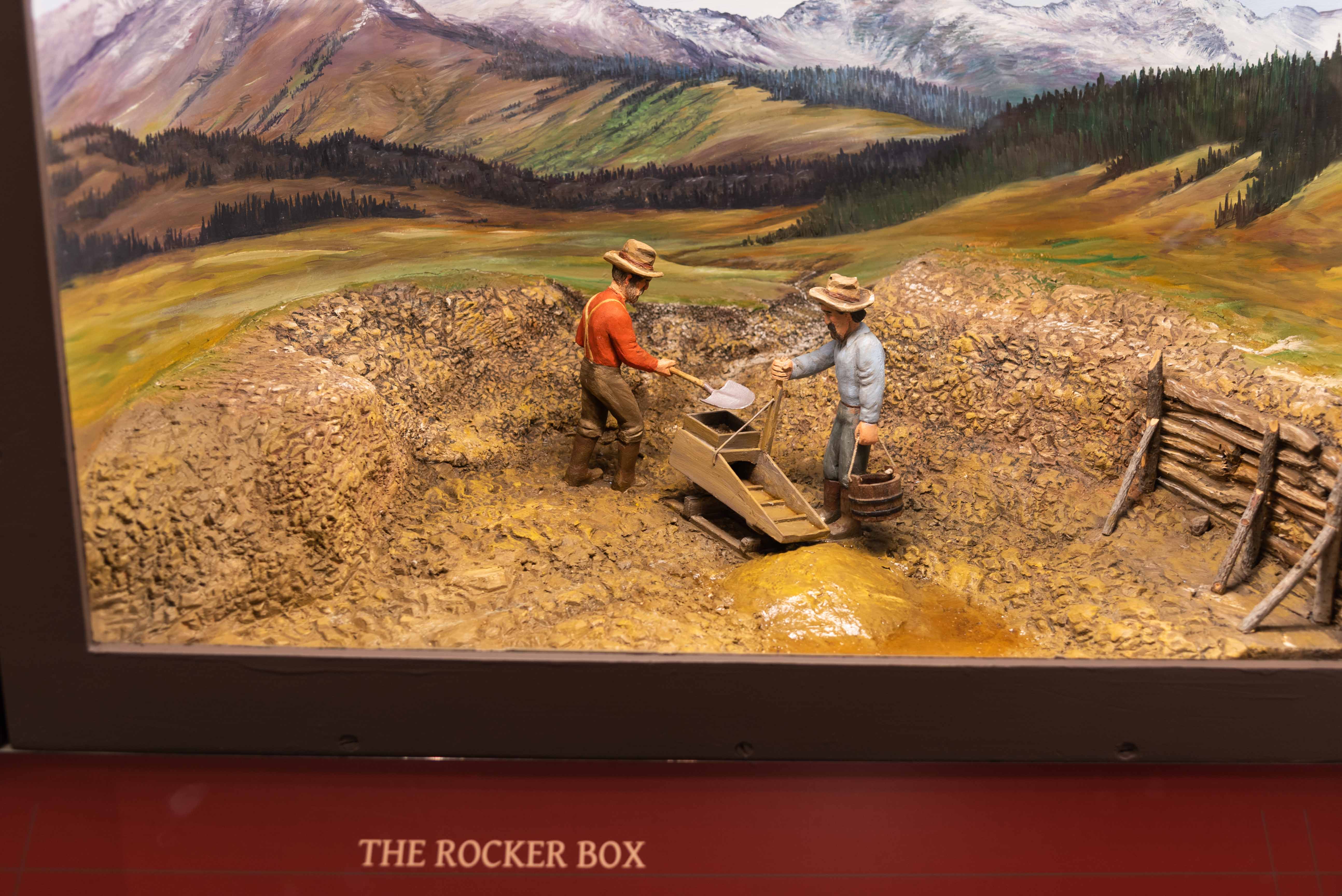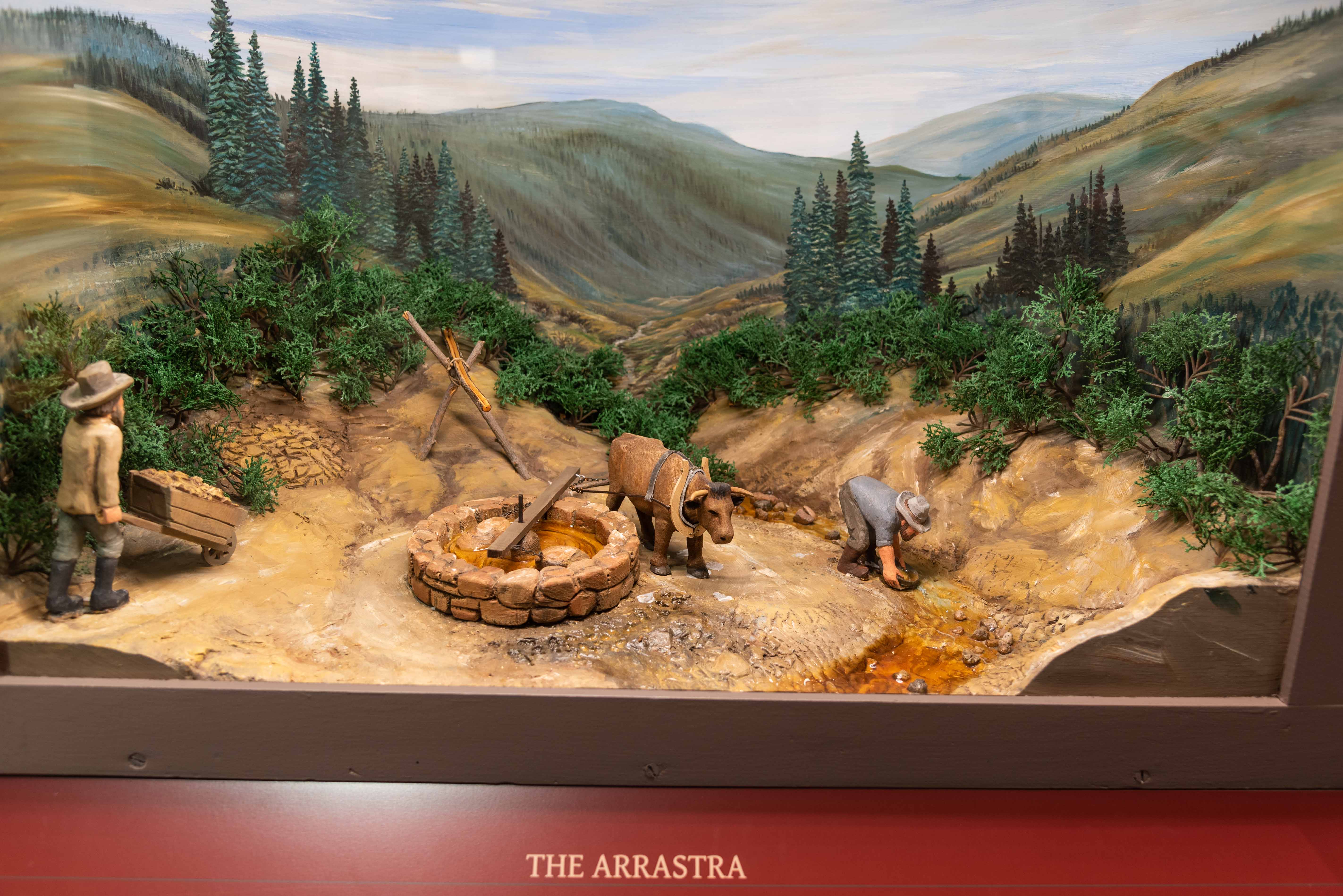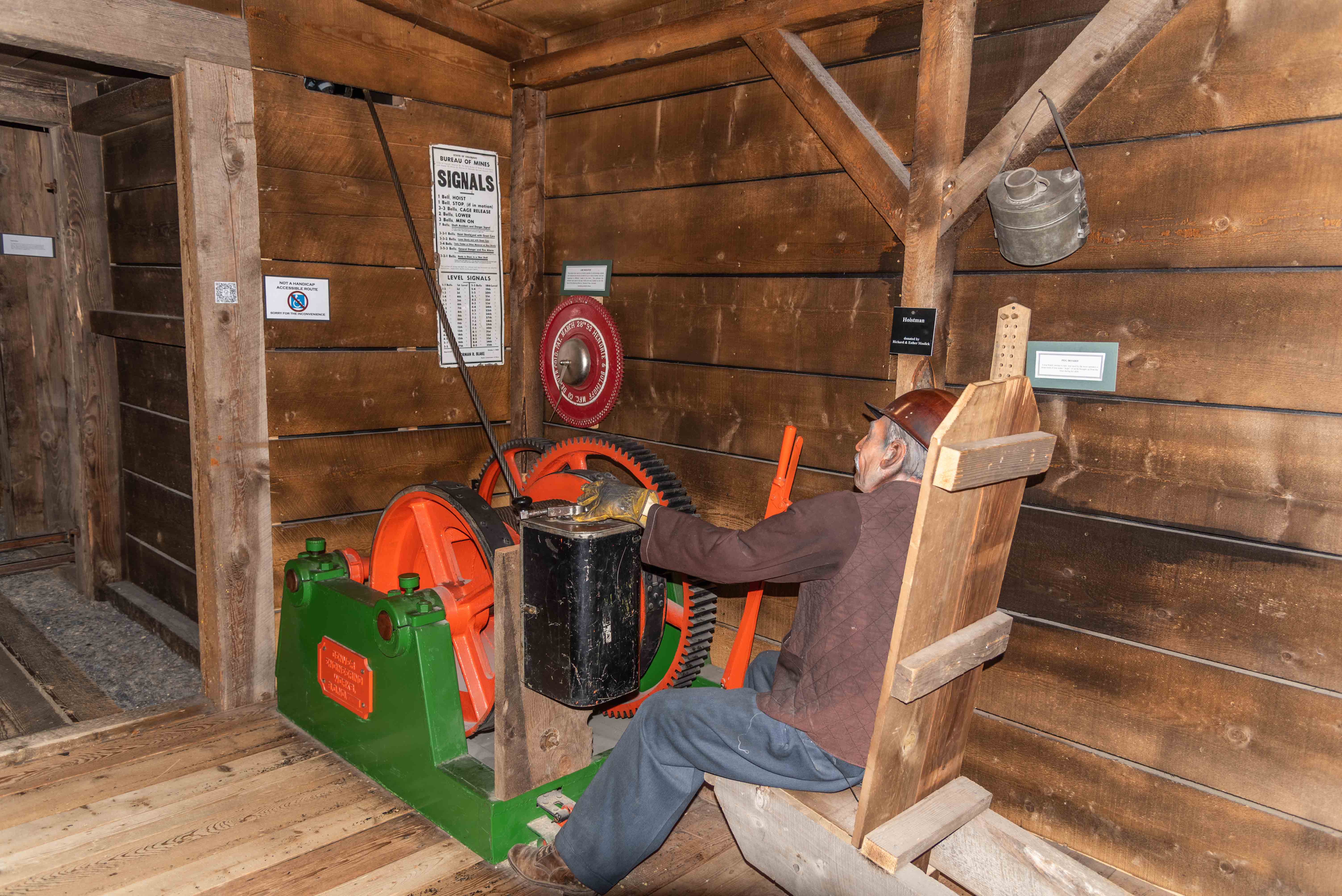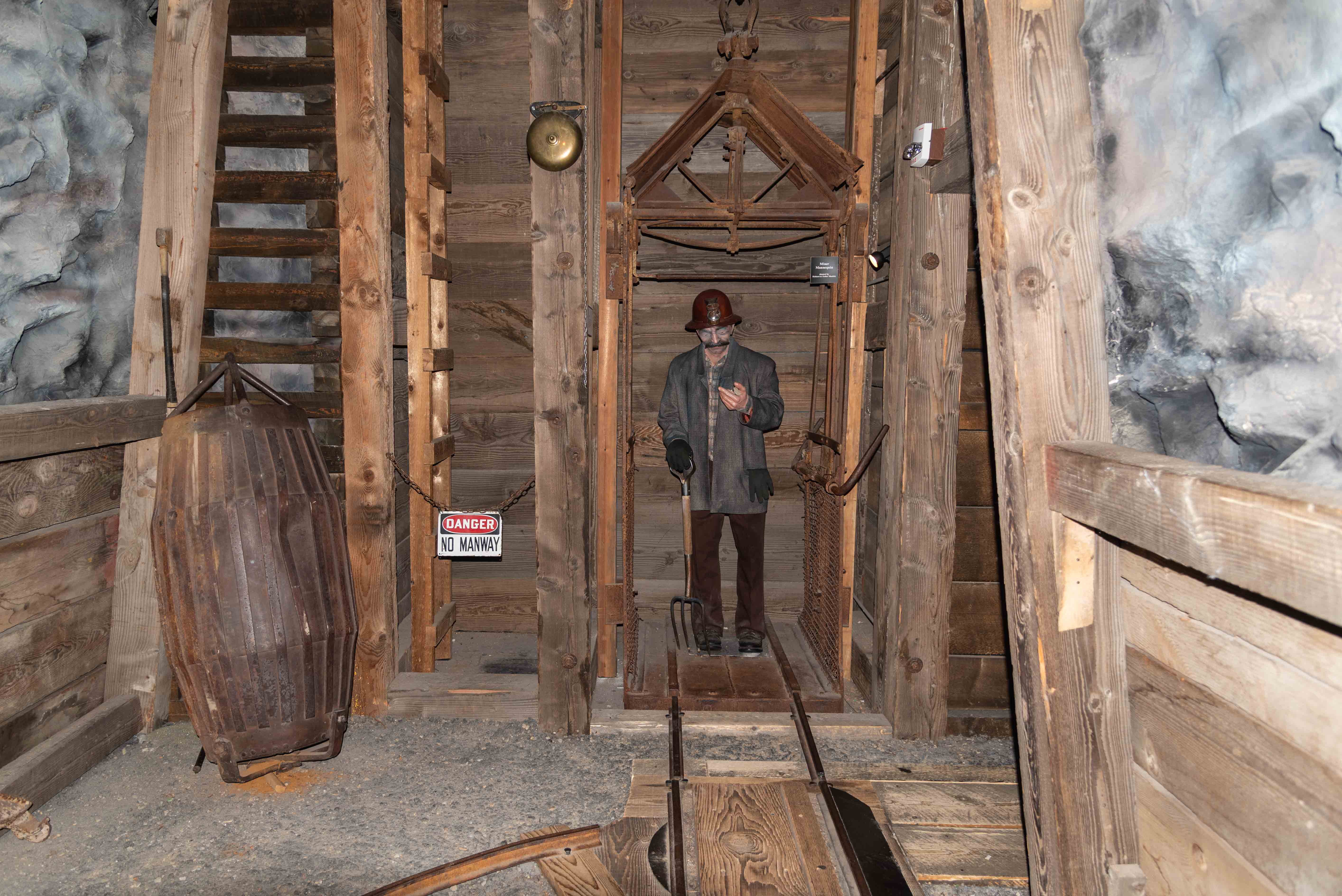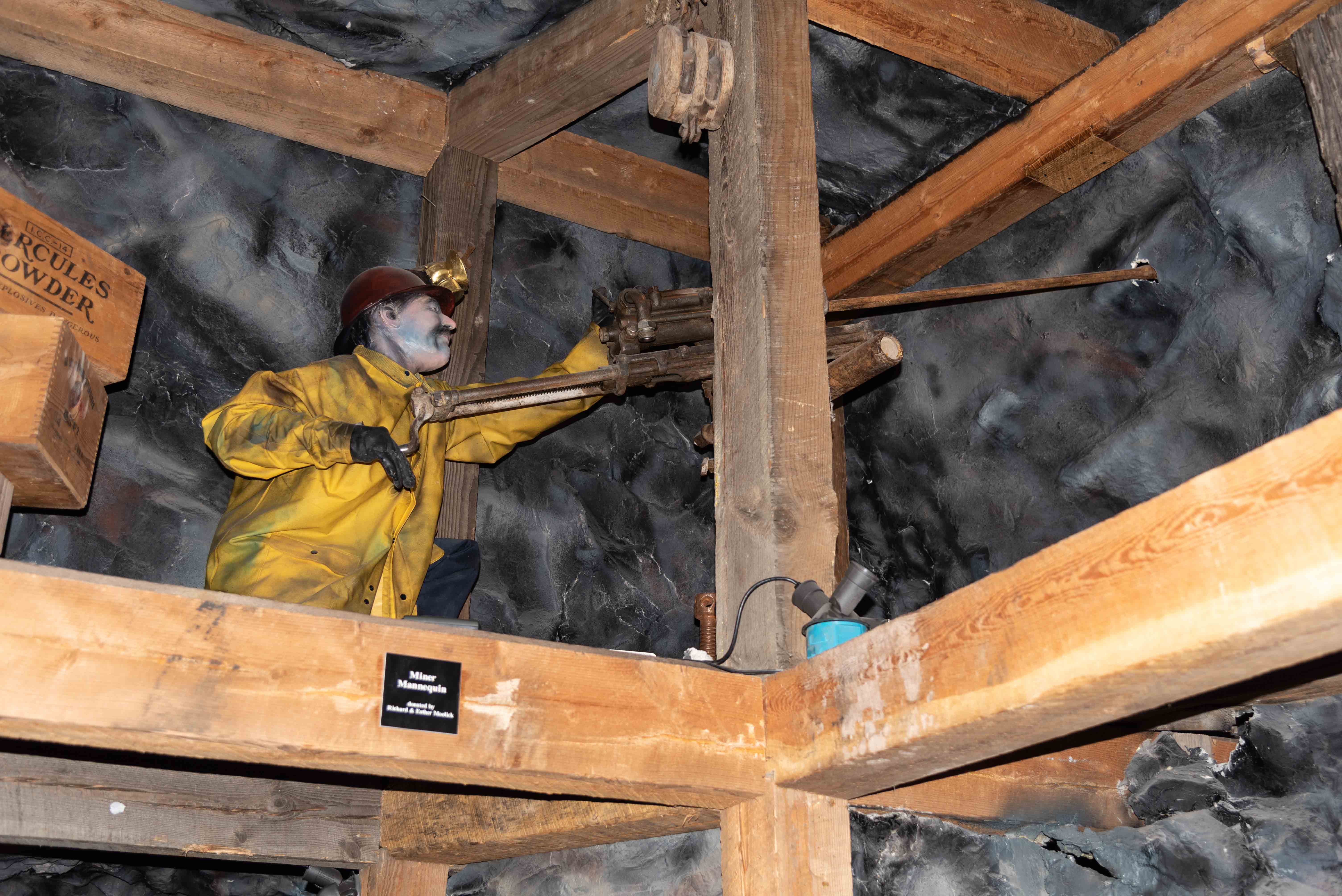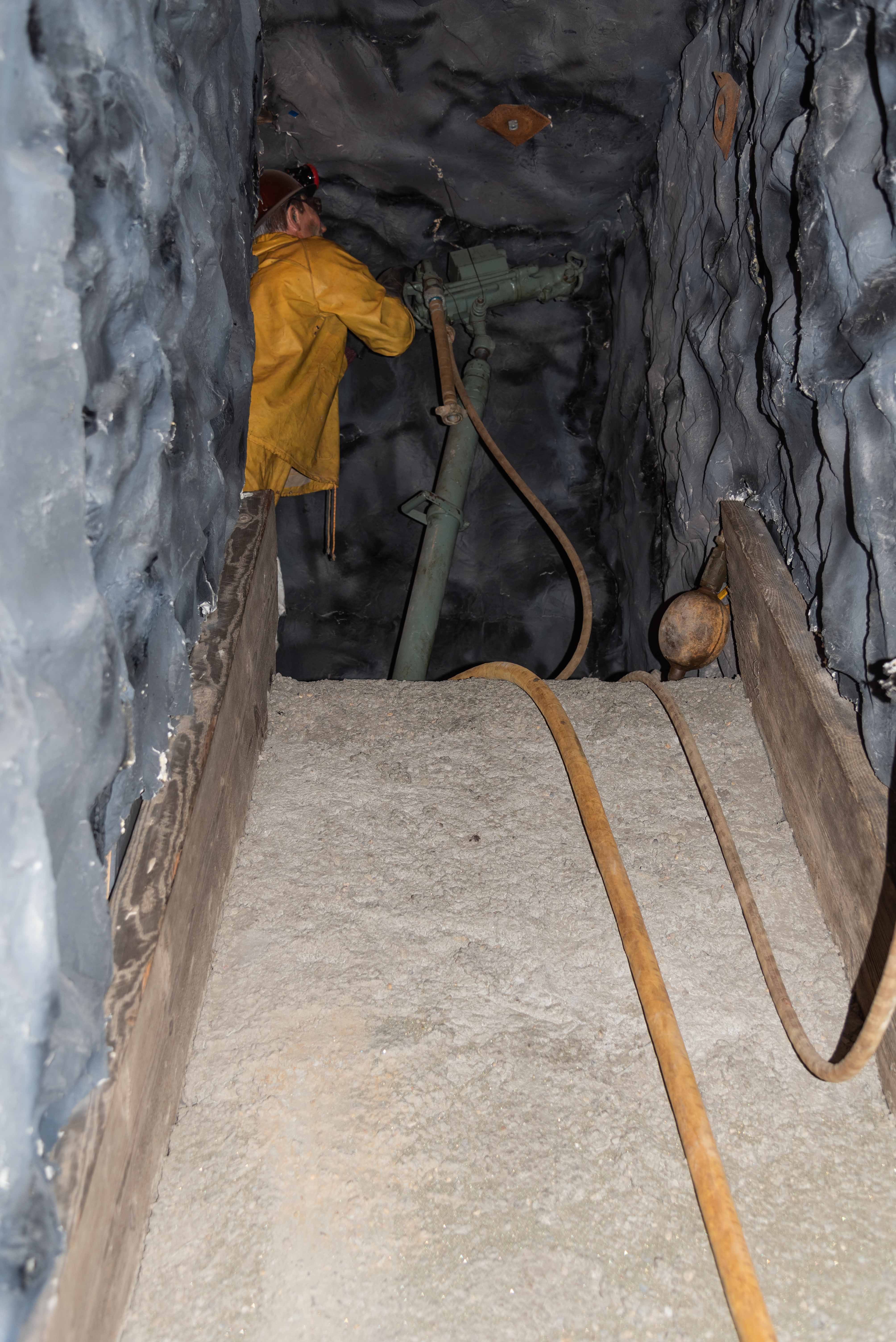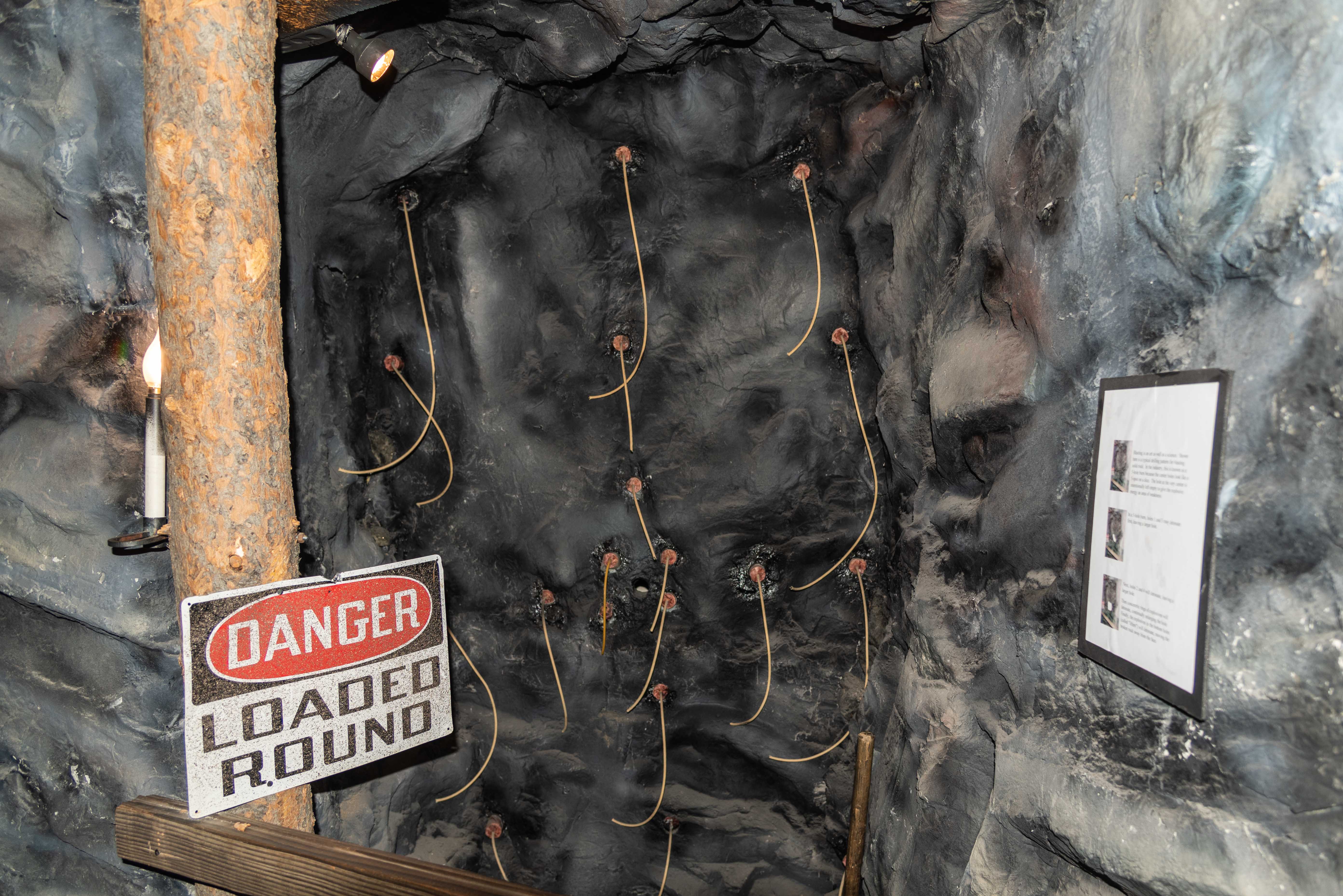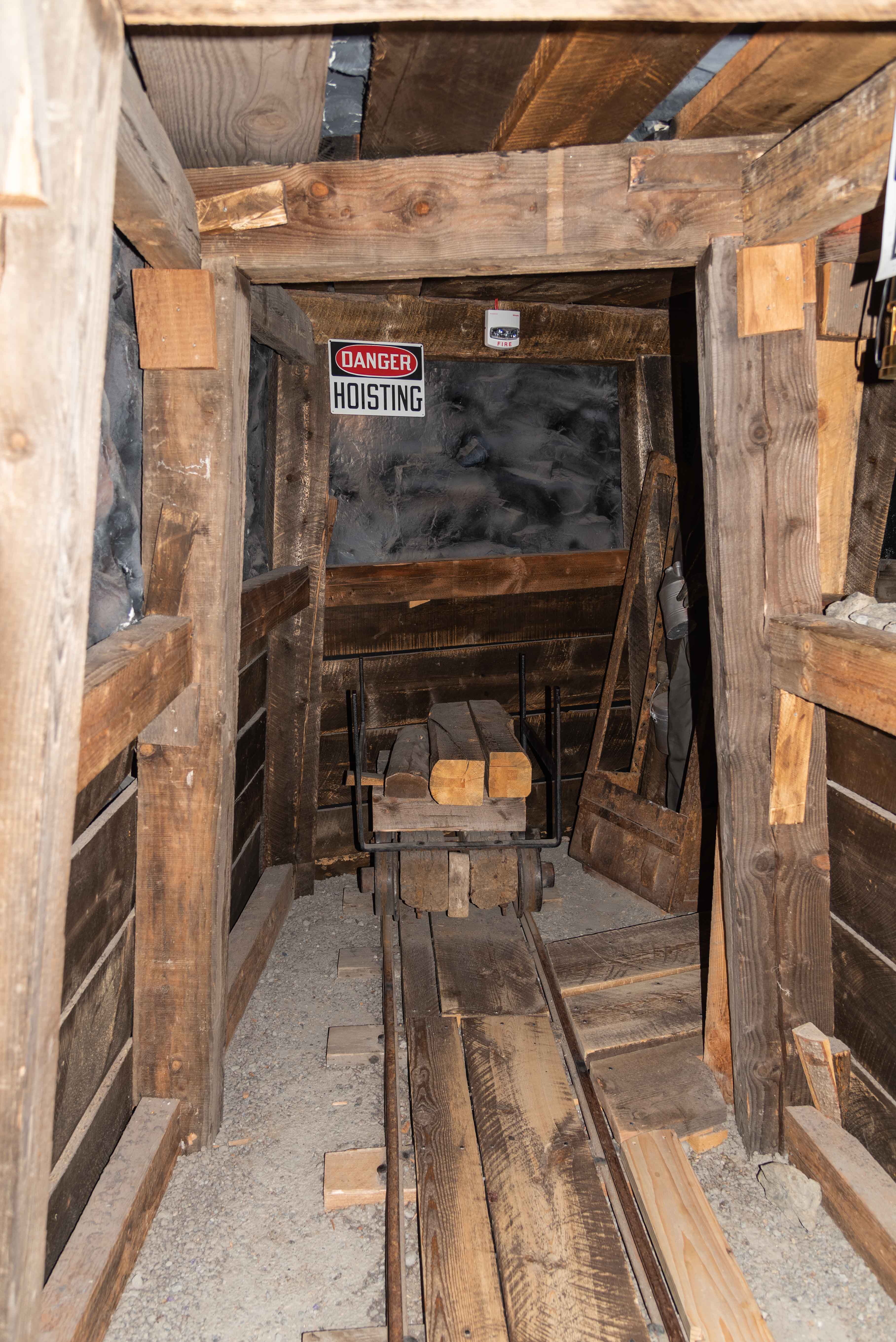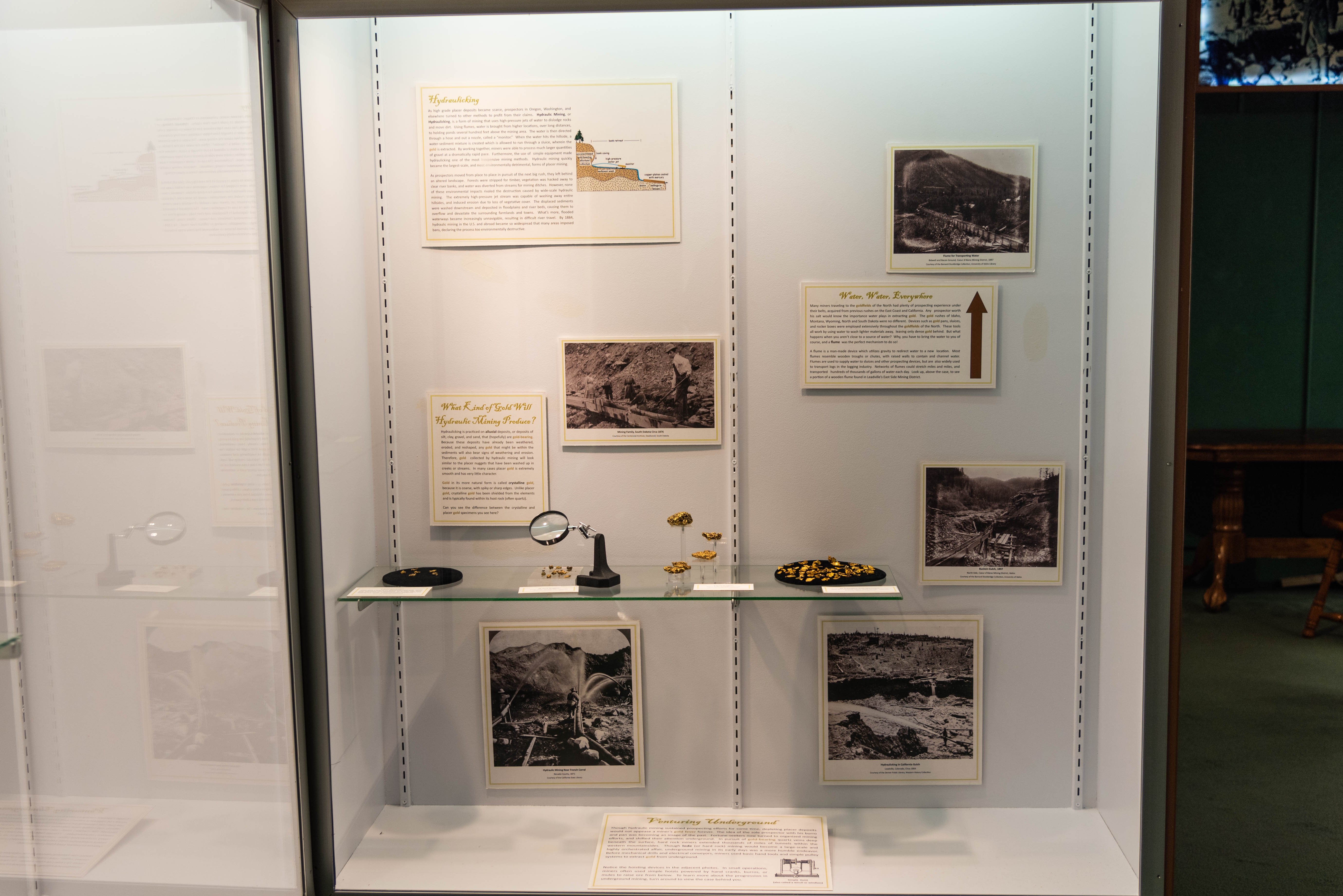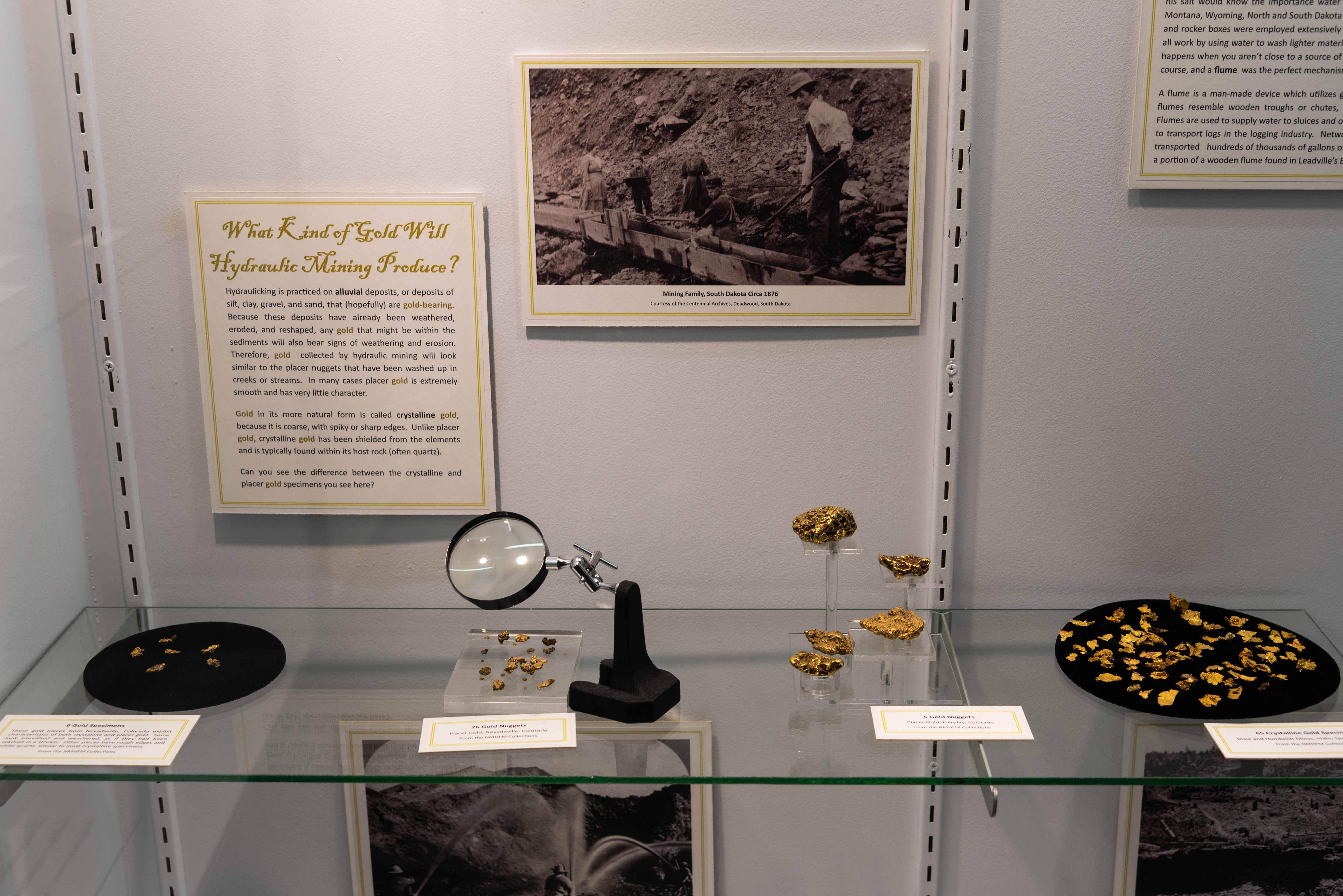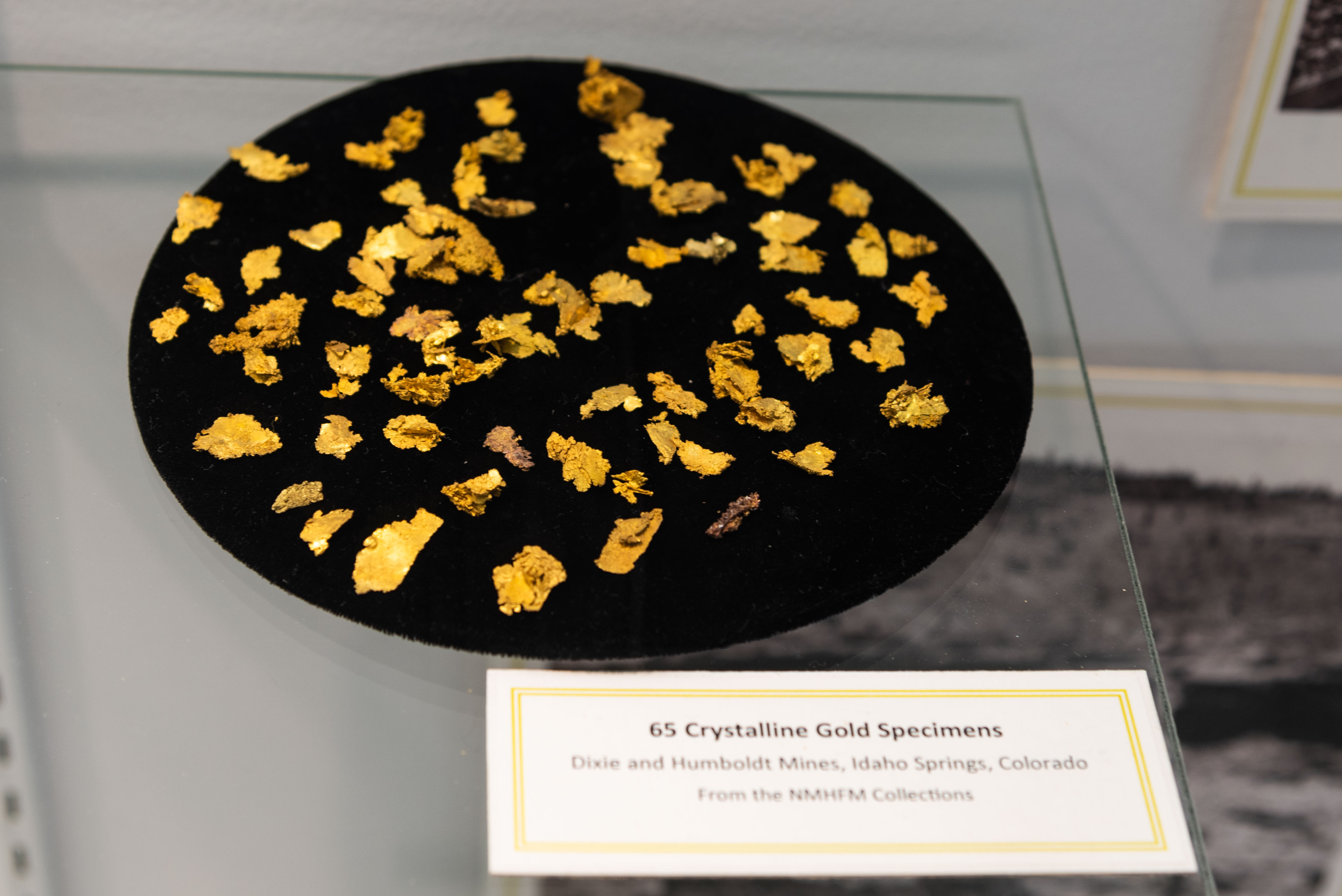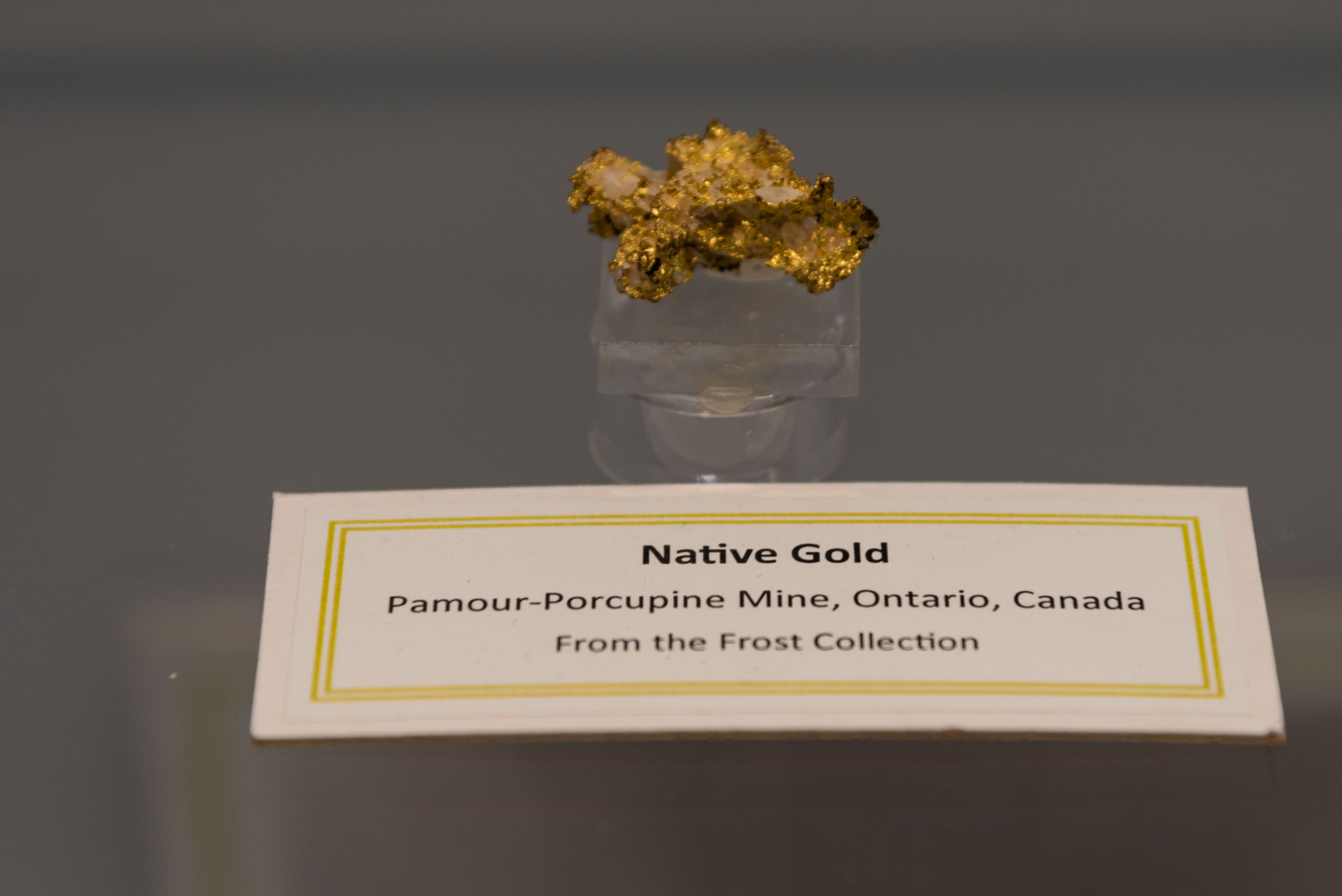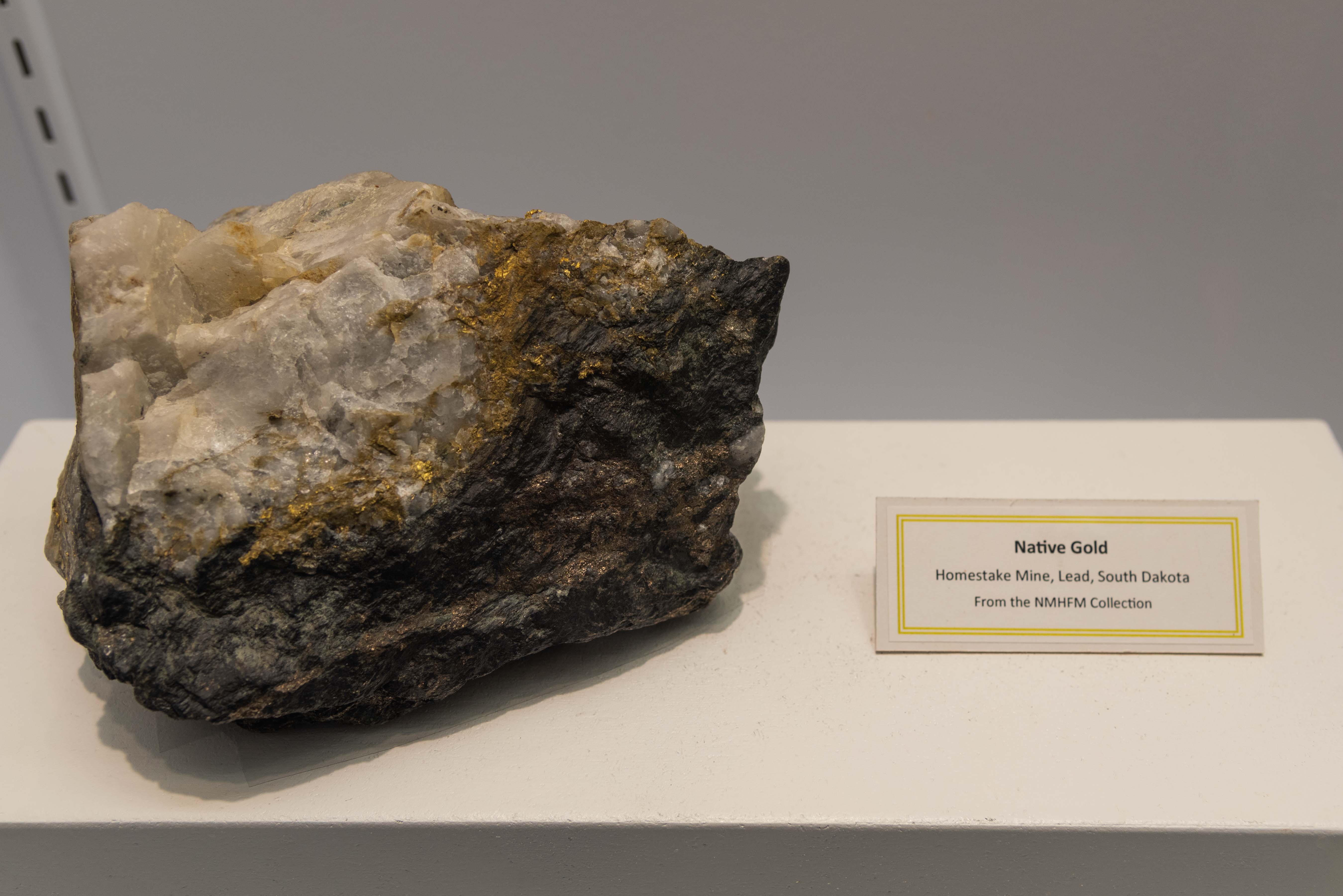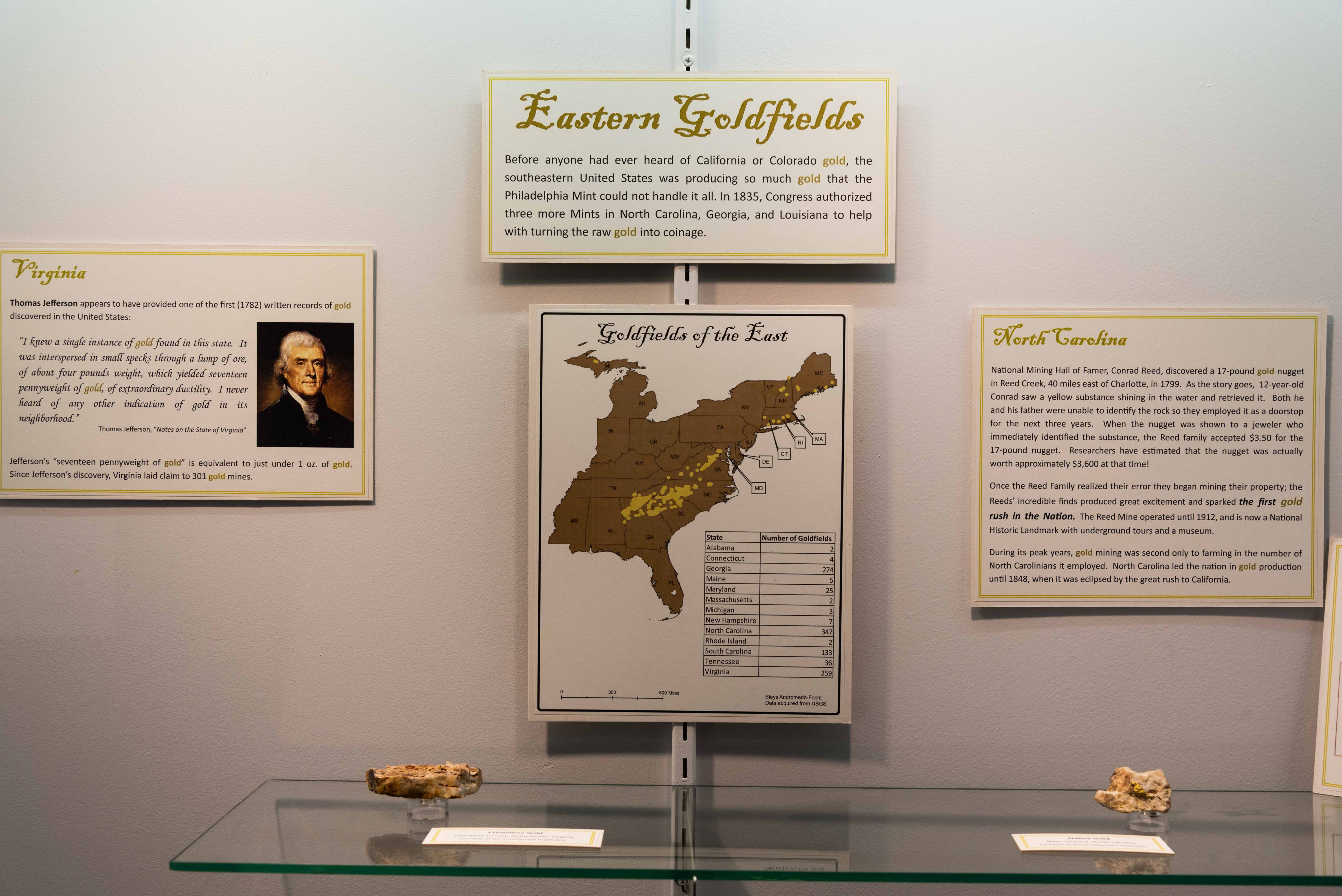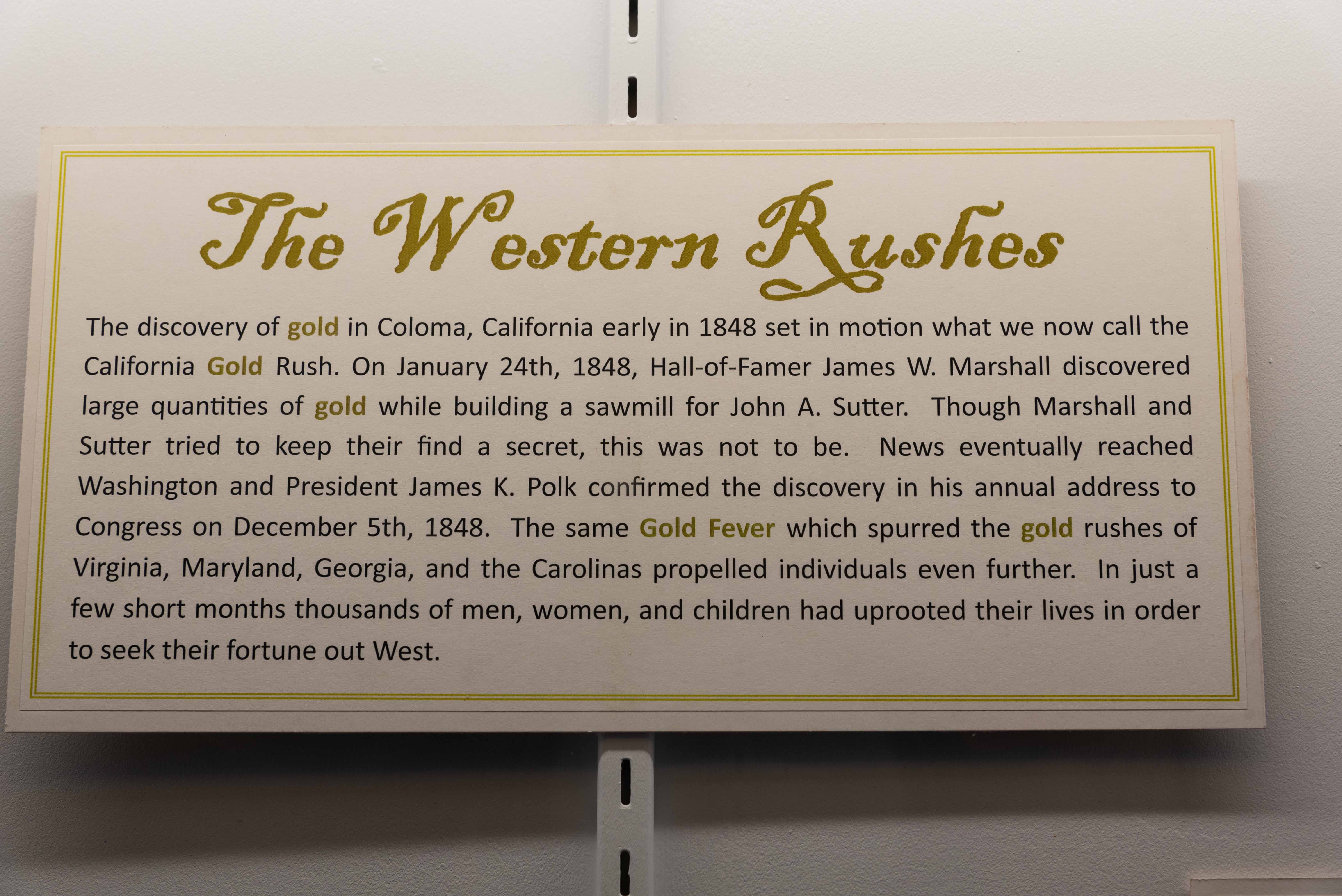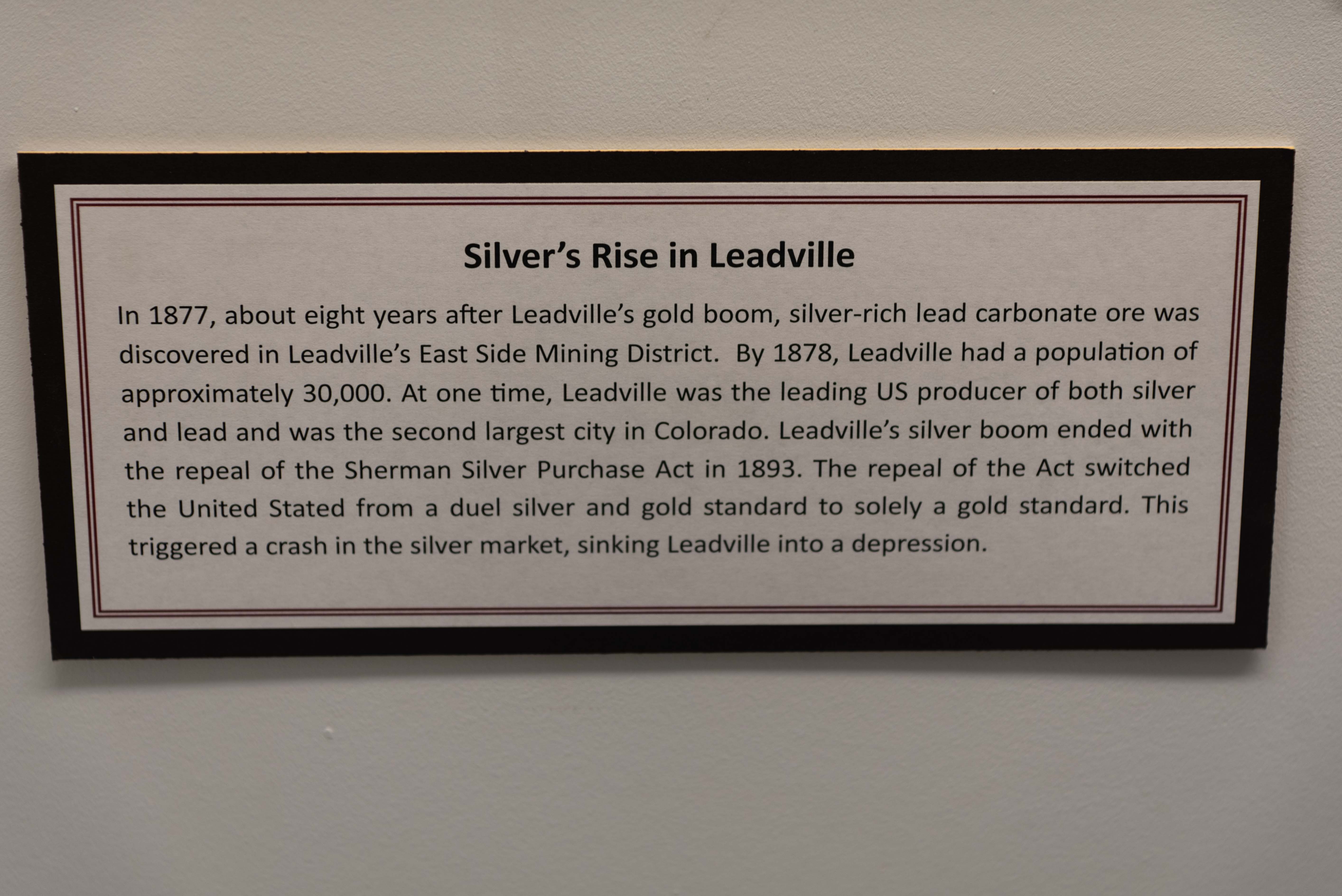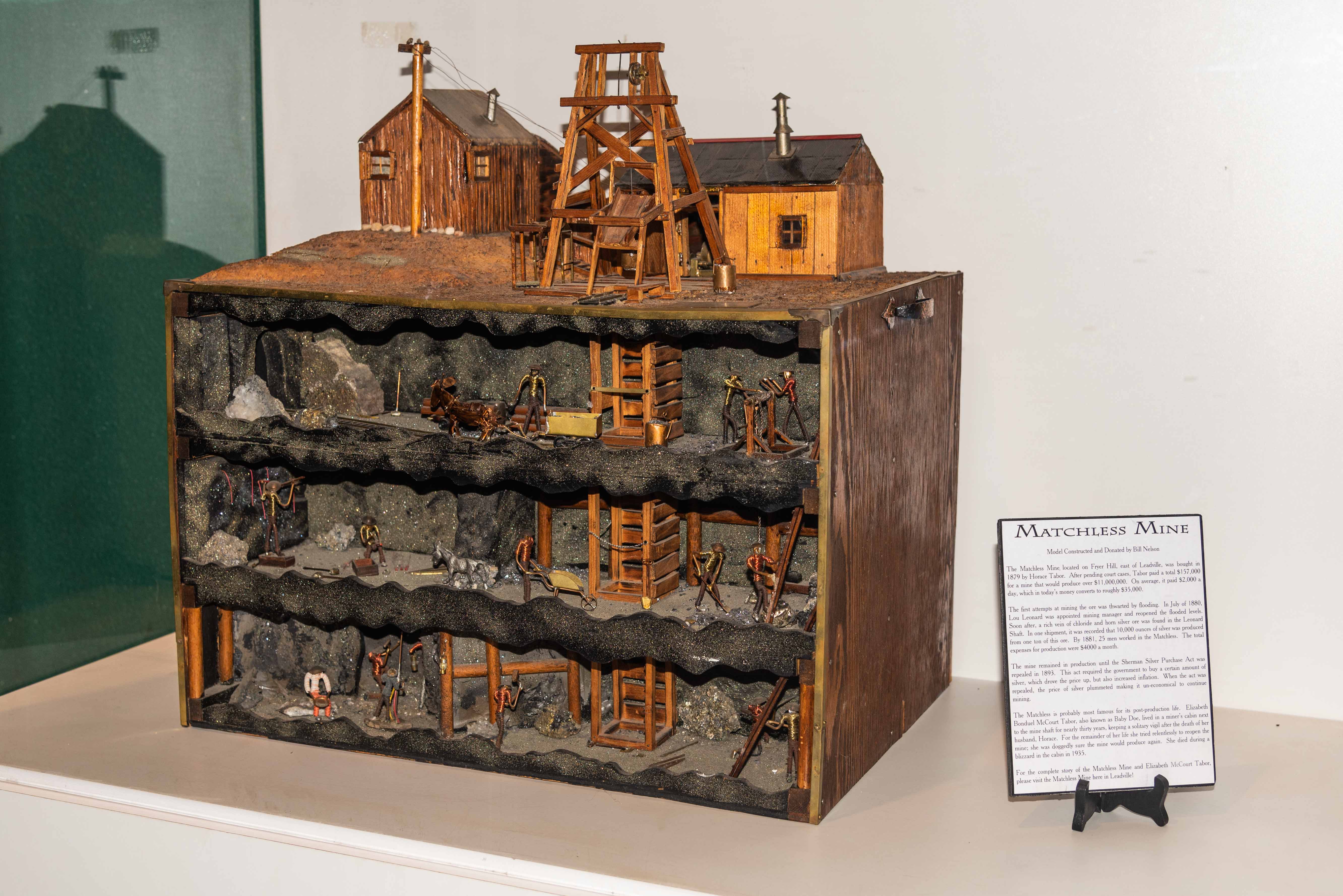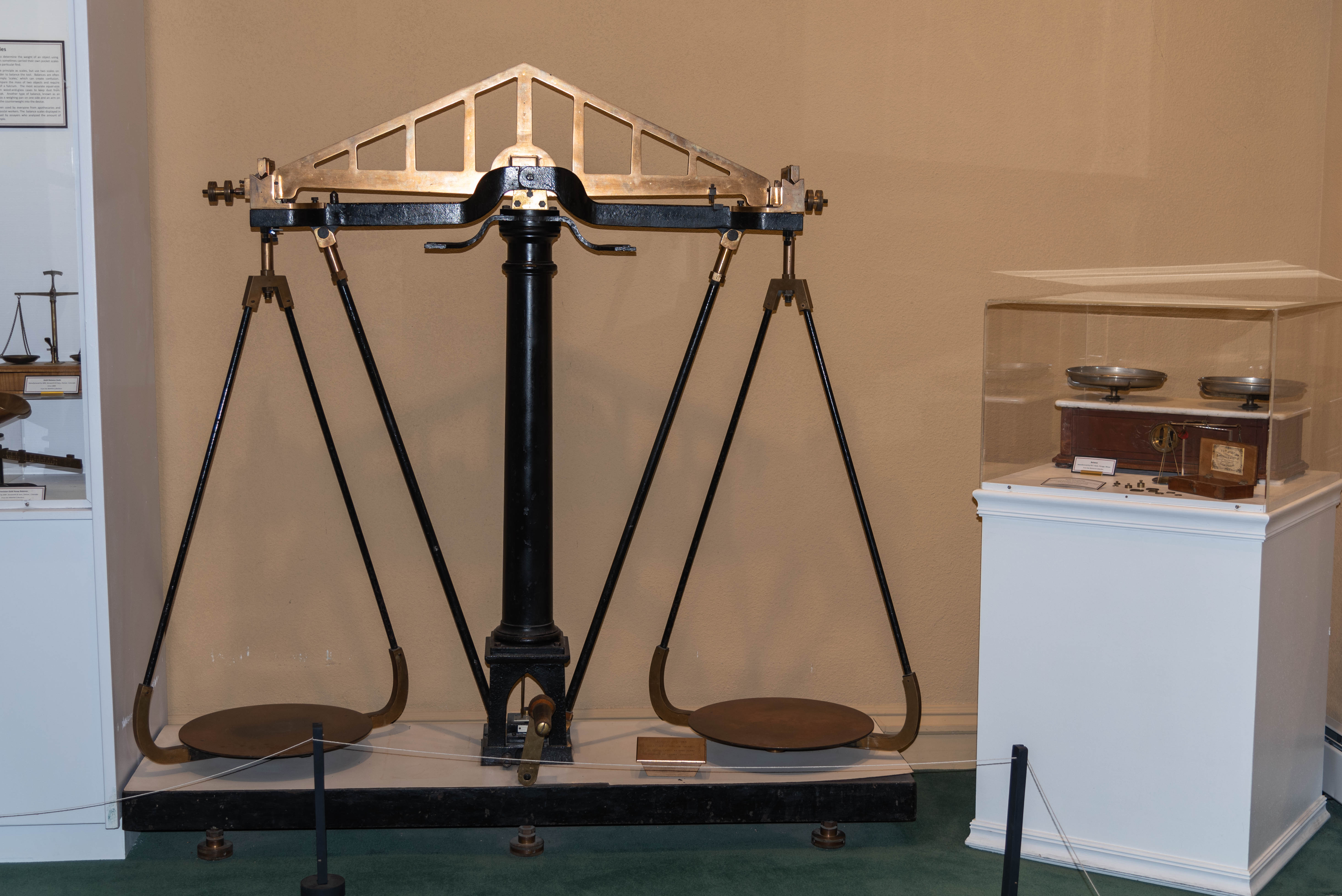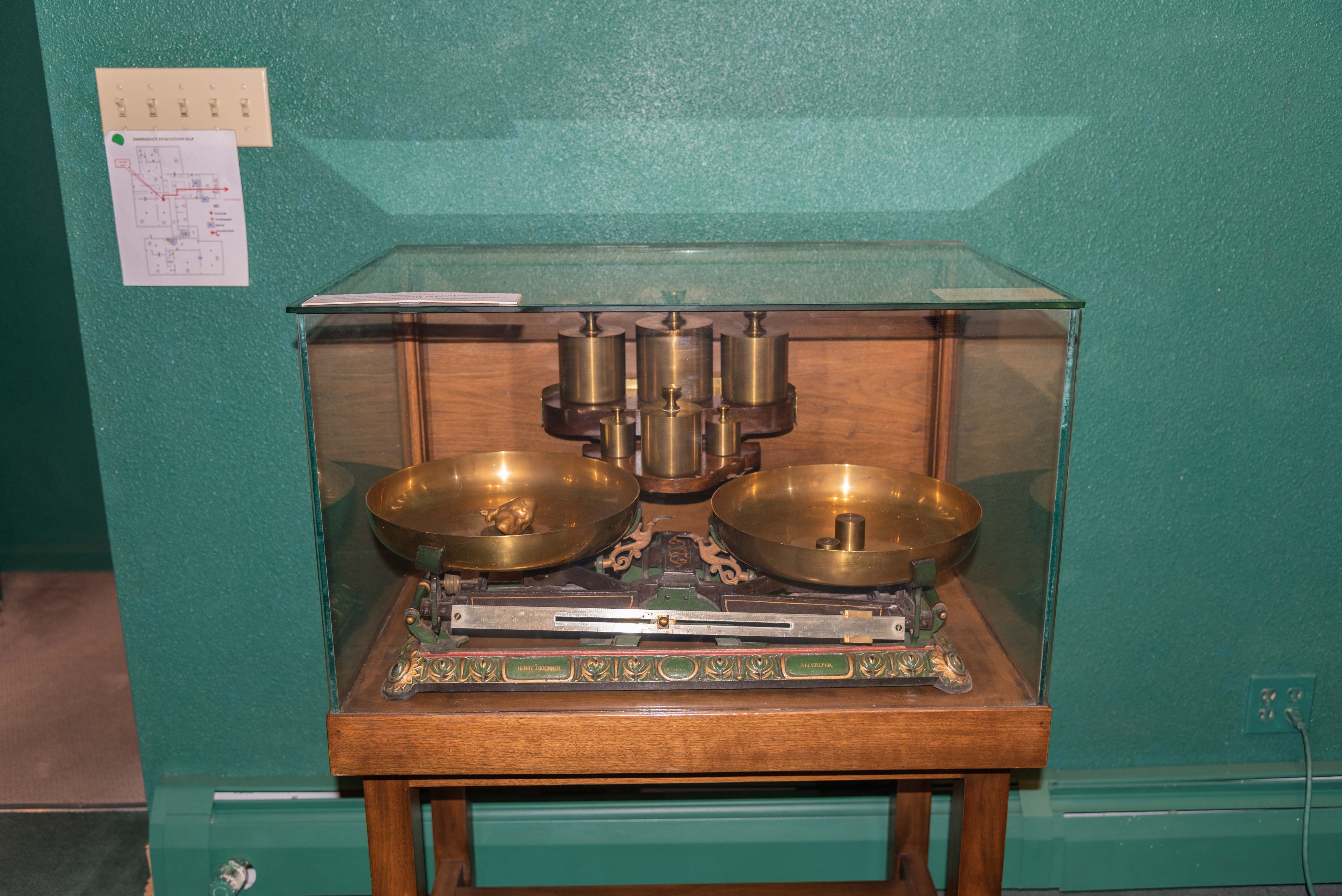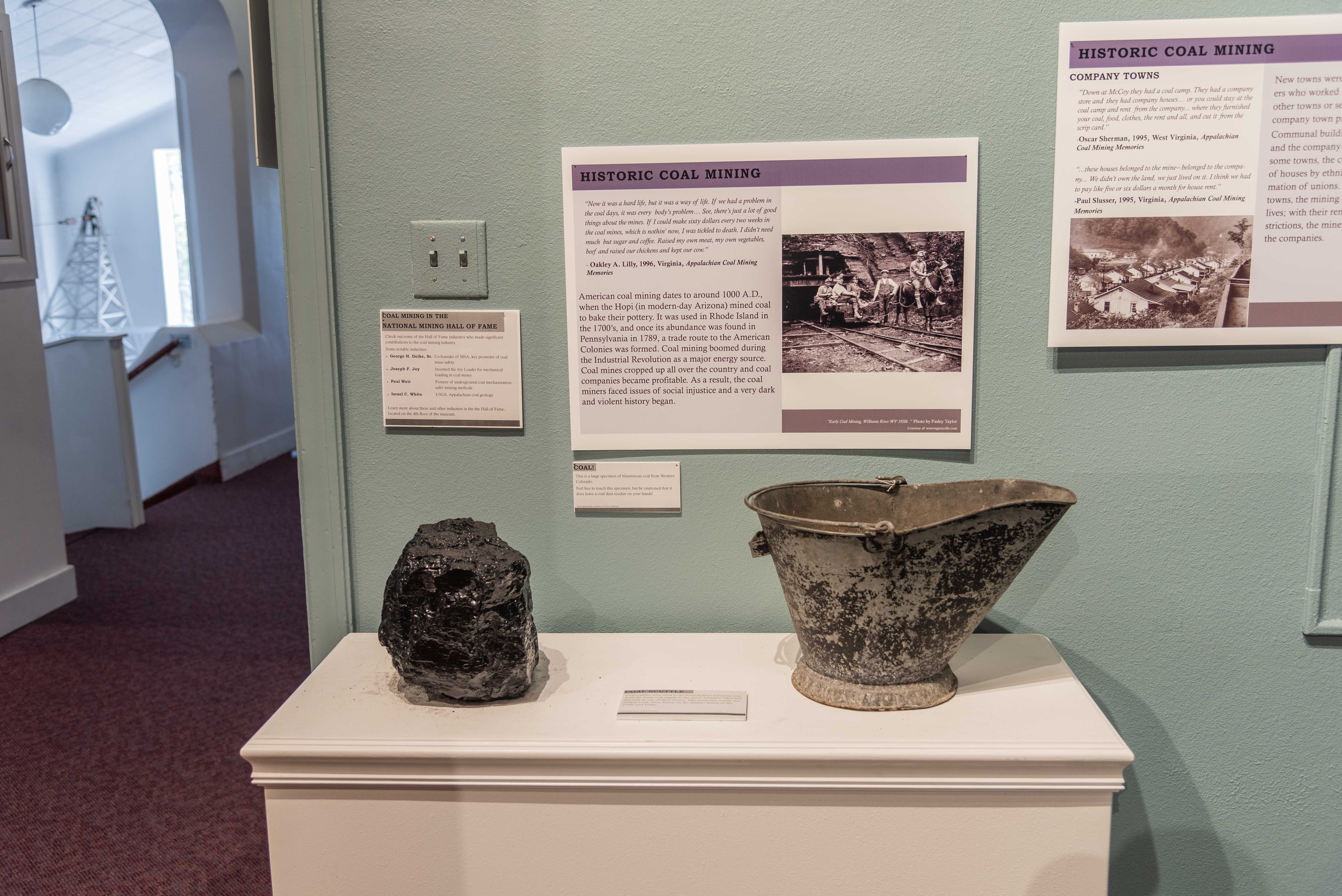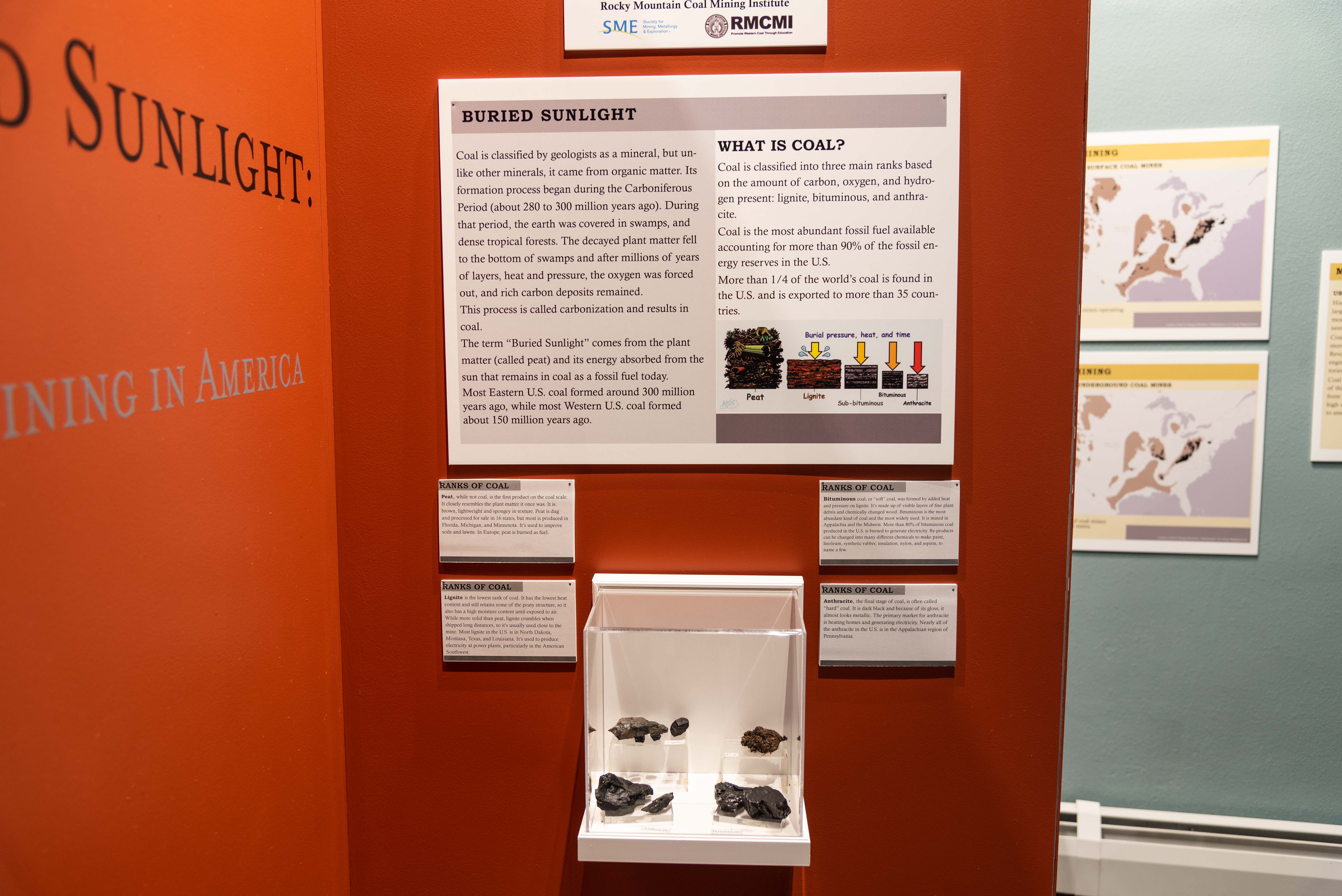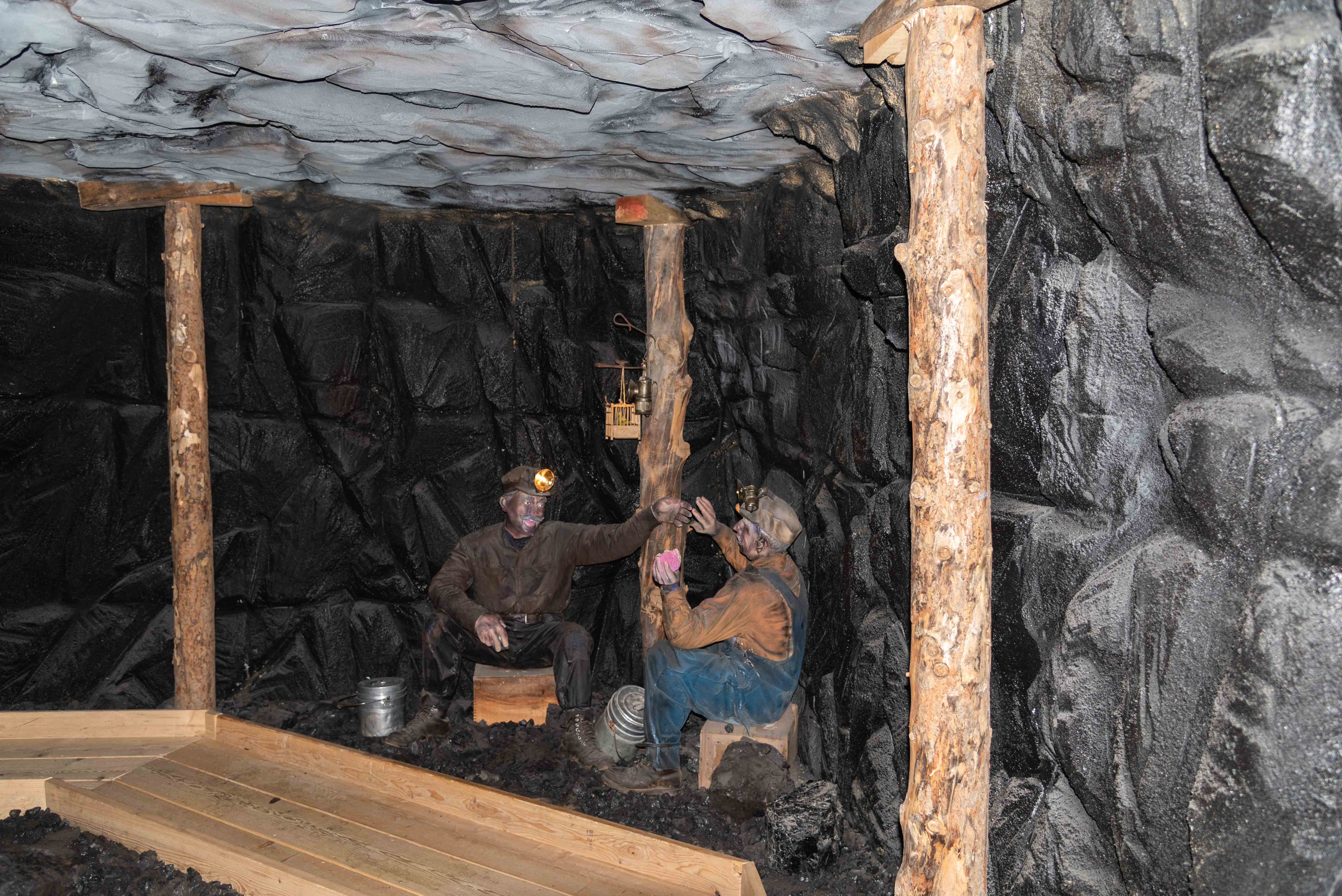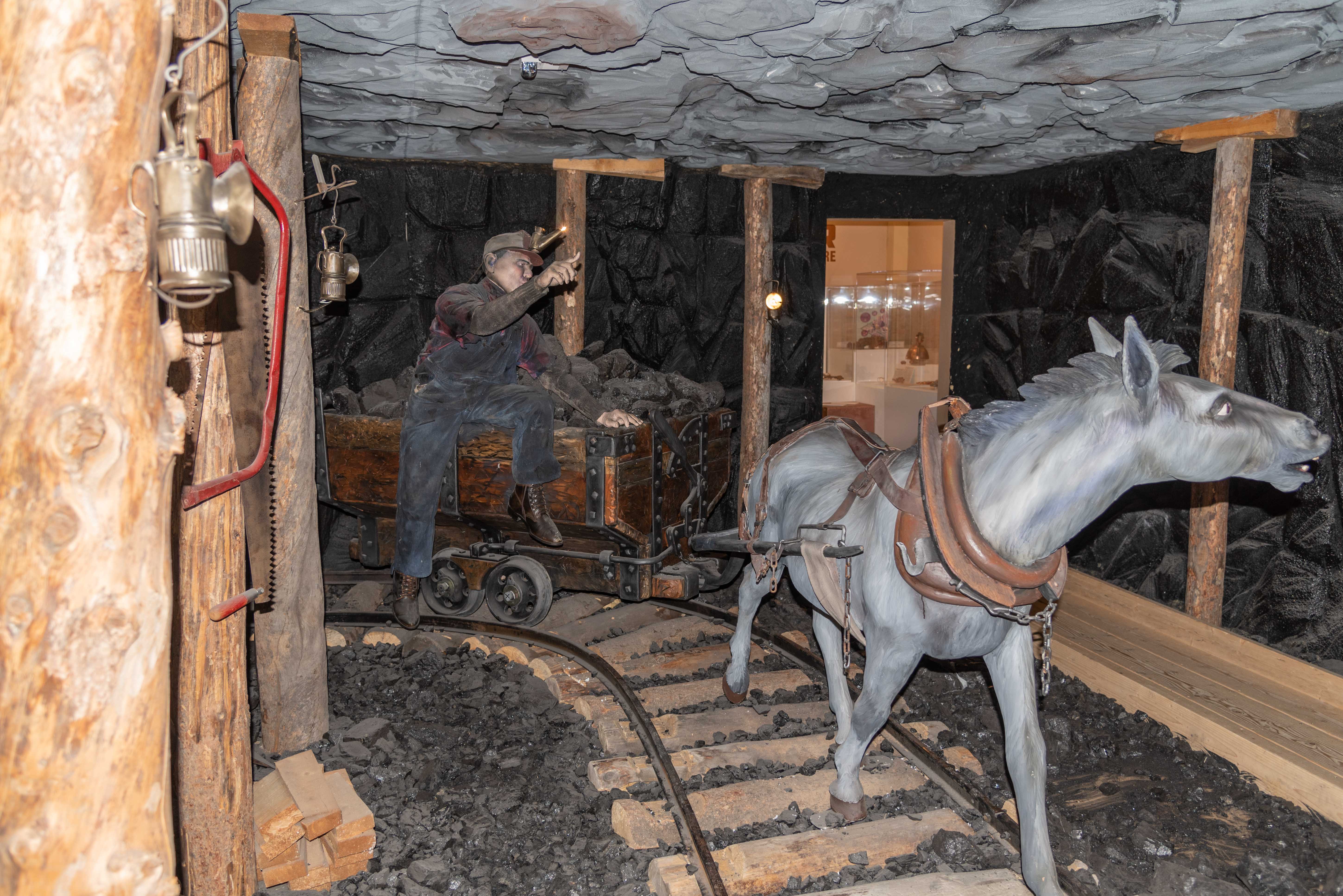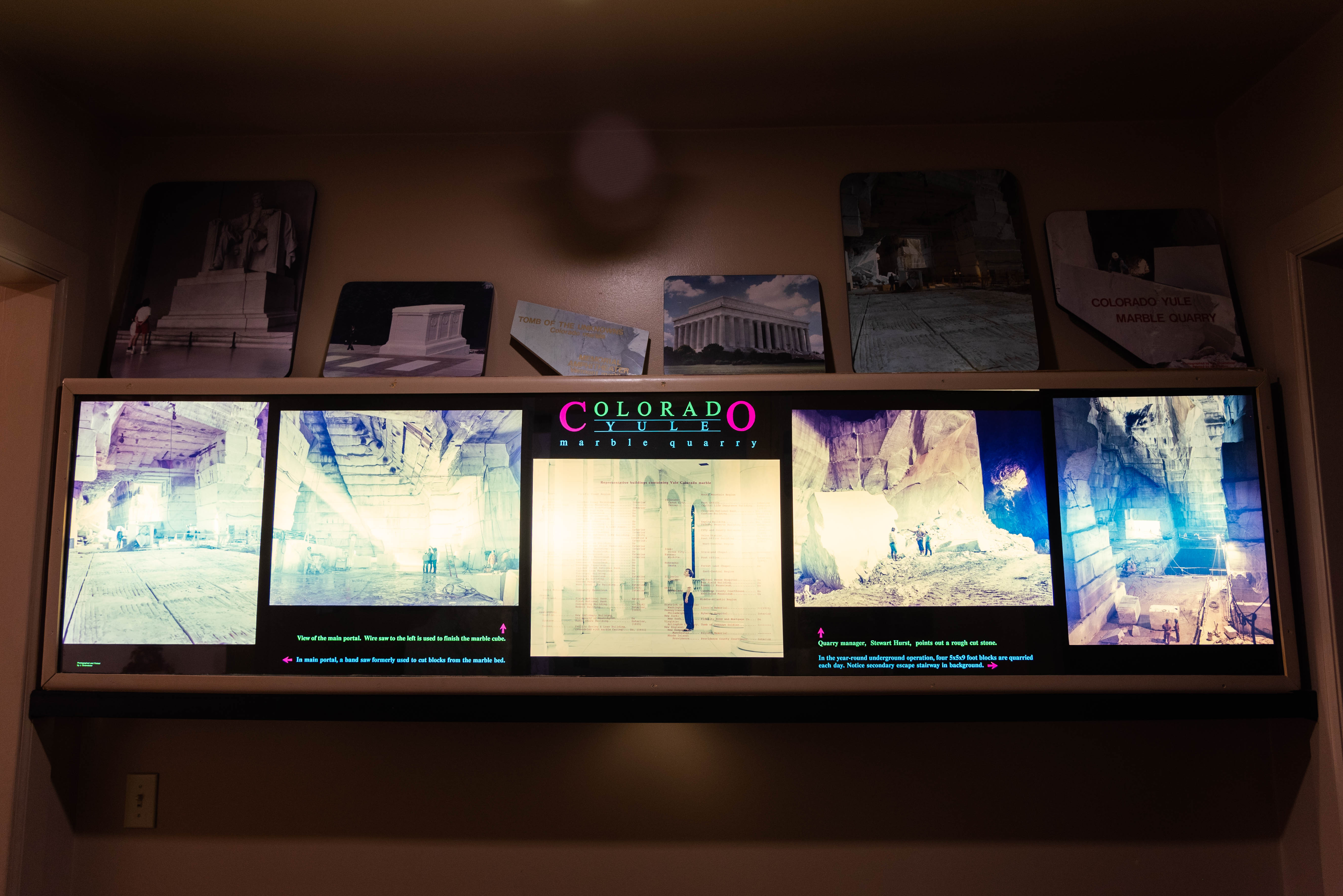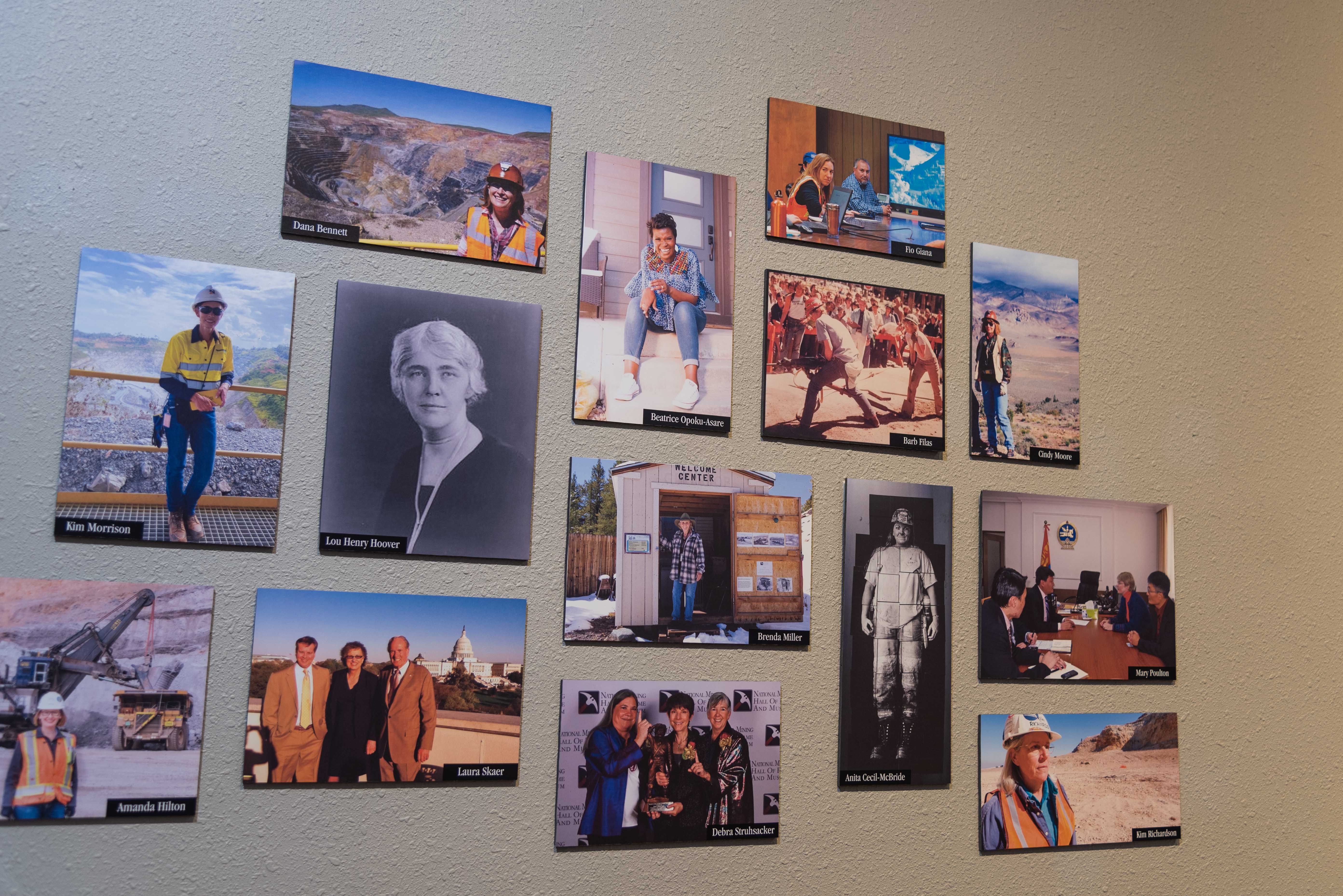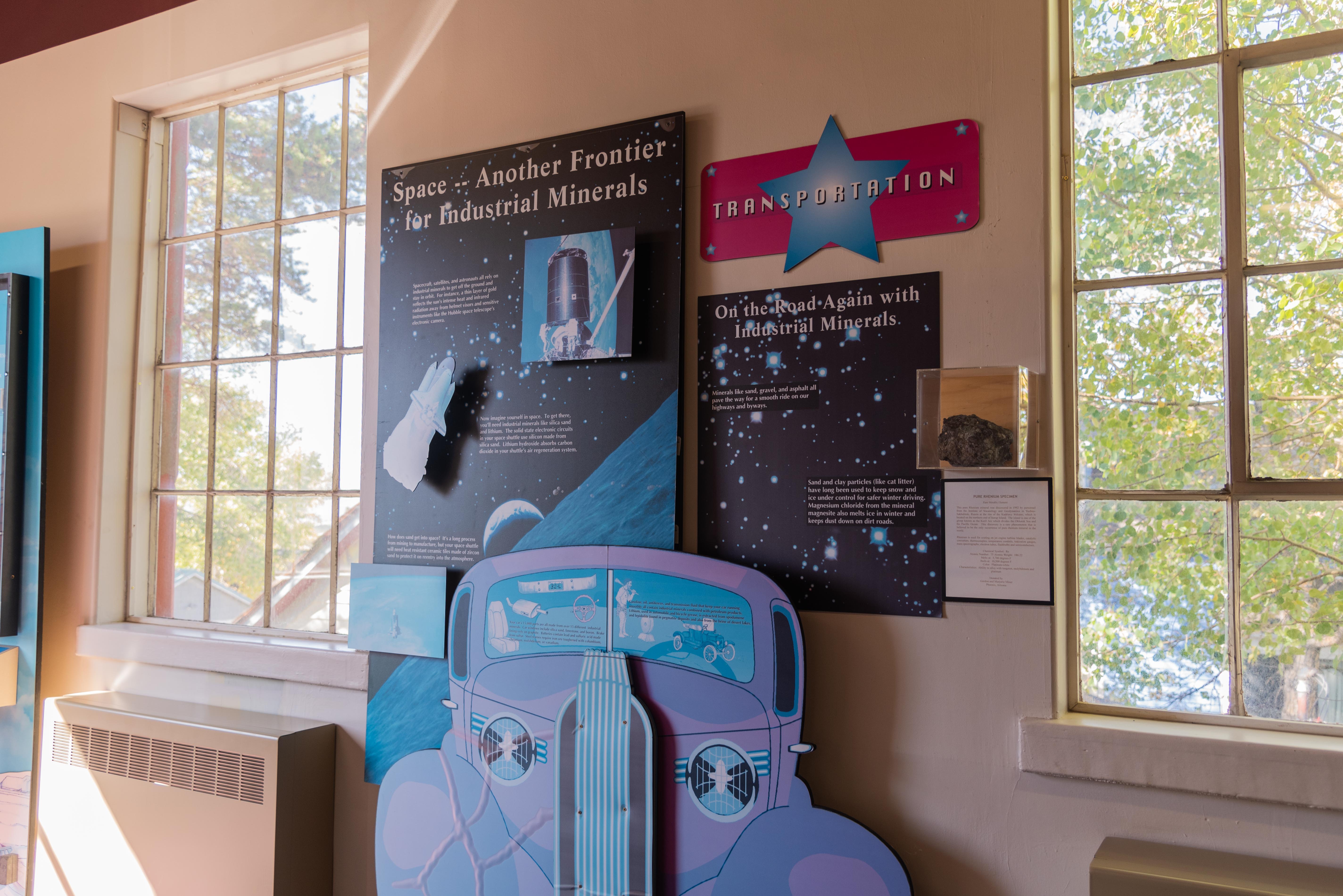National Mining Hall of Fame and Museum
The federally chartered National Mining Hall of Fame and Museum in Leadville was founded in 1987. It's the premier institution showcasing American Mining, and is nicknamed "the Smithsonian of the Rockies". The museum is located in a Victorian building that was Leadville's original high school. The museum has five levels. Unfortunately, due to time contraints (as usual) I only got to check out the second and third levels which are detailed below. The First Level houses the gift shop, Matchless Mine Exhibit, Map Gallery, and several other exhibits. The Fourth Level is a terrace with great views of Leadville and the surrounding Rocky Mountains. The Fifth Level holds the Hall of Fame galleries, library, and boardroom. Photos were taken in July and September, 2022.
Second Level
The Second Level contains the Minerals Exhibits, Molybdenum Car, Lighting Exhibit, World of
Molybdenum and Climax Mine Exhibit, and Mine Site Reclamation. I wandered through the Minerals, Lighting, and
Molybdenum Exhibits.
Minerals Room
This room contains mineral specimens from around the world. It also houses the molybdenum car.
Lighting Exhibit
Molybdenum Exhibit
The Molybdenum Exhibit tells the story of molybdenum, from its discovery through present
day. It also tells the story of the Climax Mine, probably the largest molybdenum mine in the world.
Third Level
The Third Level houses lots of exhibits. I found the Diorama Room and Hard Rock Mine especially
interesting. Also spent a lot of time in the Gold Room. In addition, there is
the Leadville Room, Scale Room, Coal Room, Marble Room, The Magic of Minerals, and Train Foyer.
So much to see, so little time.
Diorama Room
The 27 dioramas in this exhibit were donated to the museum by Henry “Hank” C. Gentsch.
These scenes tell the story of Central City. Gentsch described Central City as
“Colorado’s first and most famous mining camp,” and once, “the richest square mile on earth.”
John H. Gregory found a gold-bearing vein on May 6, 1859 in an area between present day Black Hawk and Central City. He returned later in May with a group of miners and began mining what turned out to be a "bonanza" in the ravine that became known as Gregory Gulch. His discovery, along with that of William Greene Russel in 1958 and George A, Jackson near Idaho Springs in January of 1859 started the Pikes Peak Gold Rush.
Methods of Placer Mining
A gold pan is a circular pan with angled side used to separate gold from lighter
alluvial materials scooped from a stream bed. Separation is accomplished by swirling
the sediment, gradually washing ligher material out of the pan.
A whipsaw is a long, straight, stiff blade with a handle at each end.
The saw was used to make plancks and rough cut lumber.
Sluices are long, narrow, troughs that carry water from a stream or creek.
Gold is trapped by riffles in the bottom of the trough. Nineteenth century wooden sluices
were at least 12 feet long.
A rocker box is a wooden box, open on top and one end, with riffles on the bottom, and
mounted on rockers. The rocking motion separates the gold from sand , similar to a sluice box.
The long tom is a small sluice that uses less water than a regular sluice.
An arrastra (or arastra) is a simple mill for grinding gold or silver ore.
Two or more flat-bottomed stones connected to a center post by a long arm
are dragged around a circular pit by a mule or horse connected to the other
end of the arm, crushing the ore in the process.
Hard Rock Mine
This is a replica of a typical Colorado mine. Various aspects of hard rock mining
are on display as one walks through the mine. There are several "Miner Mannequins" hard
at work during the tour.
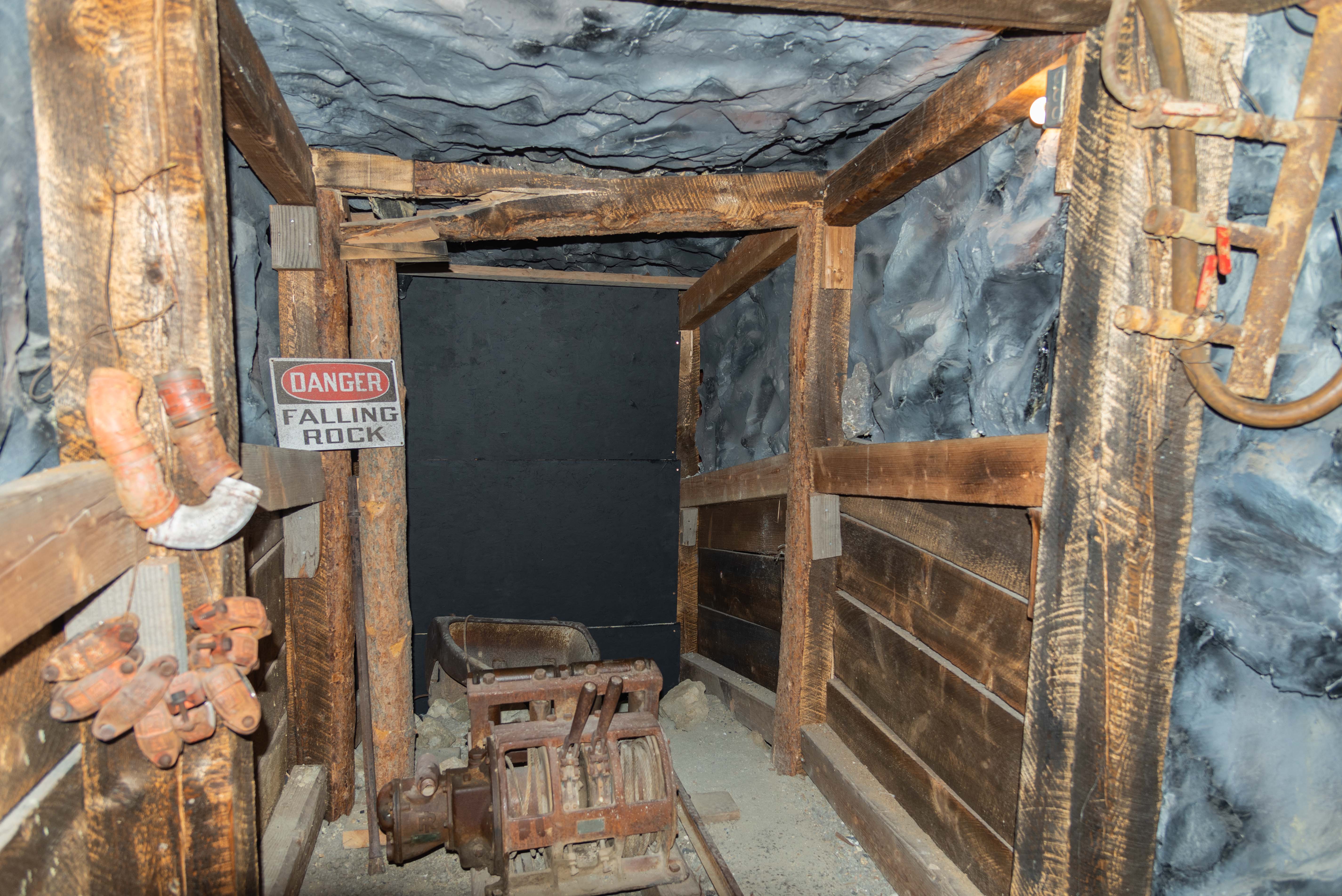
Mine drift supported by timber square sets
One beam is cracked and has been braced with an extra upright - Danger Falling Rock
Gold Room
The Gold Room is, as you would expect, all about gold. There are exhibits on gold in its
various forms, the mining of gold, and its uses. There are also displays tracing the discovery
of gold across the United States.
Leadville Room
The exhibits in the Leadville Room chronicle the boom and bust of
silver mining in the Leadville Mining District.
Scale Room
The Scale Room contains scales and pan balances of all different sizes. These were used to weigh
gold, from the lightest flakes to the heaviest bullion.
Coal Room
No mining museum would be complete without exhibits on coal mining. In addition to the various exhibits in
the Coal Room, one can wander through a mockup of a actual coal mine.
Marble Room
The marble deposits of Yule Creek were first discovered in the late 1870’s.
Col. Channing Meek developed the Colorado Yule Marble Quarry in 1905.
The marble deposits being mined at the quarry are really, really, “gigantic,
remarkable, flawless and immense.” Blocks of marble were shipped down a
3-mile long wagon road from the Yule quarry at an elevation of 9,500 feet
to the town of Marble at an elevation of 7992 feet.
Special Exhibit - Women in mining
Magic of Minerals
Exhibits on uses of industrial minerals.
Use the form on the Home Page to submit comments, questions, or suggestions. TD Productions Copyright © 2022


